Work Page 9-25
1930 Gibson All American Tenor Banjo
FON 9747-1
(Listed in Joe Spann's Gibson history book.)
Excerpts from the owners daughter :
Her Dad's story.
The Sons of the West were originally owned by Jimmy Meeks until my dad, Jesse (Slick) Robertson, bought the name from Jimmy when World War II took several members.
The Sons of the West were a Western swing group who played mostly in Amarillo, TX, during the late '30s and early '40s, becoming the Panhandle area's first significant outfit working in that style.
They were founded in 1936 by fiddler Son Lansford, a cousin of Bob Wills who'd performed with the Texas Playboys for a time. Lansford actually started the group in Fort Worth but moved them to Amarillo in search of a largely untapped market for music.
The Sons ran through 11 members during the course of their brief existence: bassist/lead singer Jimmy Meek (who later assumed leadership of the group when Lansford departed), steel guitarist Billy Briggs (an innovative player who added a seventh string to his instrument in order to play chords), pianist Loren Mitchell, guitarists Freddie Dean and Jess Williams, banjoists Cliff Wells and Jess Robertson, and fiddlers Leonard Seago, Pat Trotter, and Buck Buchanan. They cut an album for Decca in 1938, which featured mostly pop standards, and recorded through 1941, when they scored their biggest hit with "Sally's Got a Wooden Leg" on Columbia.
Most of the members were drafted into World War II in 1942, putting an end to the band. Briggs later played around the area with a band called the XIT Boys, which also featured Trotter and Williams, among others. ~ Steve Huey
***********************
MORE PERSONAL HISTORY
The things we were told as we were growing up was that Daddy had purchased the banjo in 1934 for $500, which was a lot of money at that time. It was a 1934 Gibson tenor banjo with the history of the United States on the arm in Mother of Pearl. Supposedly there were only 8 of them made at the time. The banjo means the world to us as the four of us sat around & listened to daddy play as we sang, mostly religious songs. One sister sang Frankie and Johnny Were Lovers (her name was Frankie), but mostly we sang as a quartet in church or family reunions. All of Daddy's 12 siblings played musical instruments, wrote songs & sang.
We grew up in Amarillo, but I live on a ranch outside of Johnson City, my brother, Pat-87, also lives on the ranch. Our oldest sister, Cloie-92 in October, lives in Plano. We lost our sister, Frankie, several years ago, who would have been 90 at this time. We were always a very close family in a Christian home full of love. Kids nowadays wouldn't understand a family of 4 kids & parents living in an 850 square foot house & never felt poor. We were too rich in the areas that matter most in life.
*************************************
My Notes:
As I heard from Tricia, the banjo was damaged in this manner when one of the stage crew ran over it.
I have heard about and seen such things before and it is always a sad scene.
An attempt at repair was tried in the past that failed.
I will remove all of that effort and go back with one of my own.
It is not an easy fix and to hold 100 lb/ft of string tension in will need to be substantial.
(Listed in Joe Spann's Gibson history book.)
Excerpts from the owners daughter :
Her Dad's story.
The Sons of the West were originally owned by Jimmy Meeks until my dad, Jesse (Slick) Robertson, bought the name from Jimmy when World War II took several members.
The Sons of the West were a Western swing group who played mostly in Amarillo, TX, during the late '30s and early '40s, becoming the Panhandle area's first significant outfit working in that style.
They were founded in 1936 by fiddler Son Lansford, a cousin of Bob Wills who'd performed with the Texas Playboys for a time. Lansford actually started the group in Fort Worth but moved them to Amarillo in search of a largely untapped market for music.
The Sons ran through 11 members during the course of their brief existence: bassist/lead singer Jimmy Meek (who later assumed leadership of the group when Lansford departed), steel guitarist Billy Briggs (an innovative player who added a seventh string to his instrument in order to play chords), pianist Loren Mitchell, guitarists Freddie Dean and Jess Williams, banjoists Cliff Wells and Jess Robertson, and fiddlers Leonard Seago, Pat Trotter, and Buck Buchanan. They cut an album for Decca in 1938, which featured mostly pop standards, and recorded through 1941, when they scored their biggest hit with "Sally's Got a Wooden Leg" on Columbia.
Most of the members were drafted into World War II in 1942, putting an end to the band. Briggs later played around the area with a band called the XIT Boys, which also featured Trotter and Williams, among others. ~ Steve Huey
***********************
MORE PERSONAL HISTORY
The things we were told as we were growing up was that Daddy had purchased the banjo in 1934 for $500, which was a lot of money at that time. It was a 1934 Gibson tenor banjo with the history of the United States on the arm in Mother of Pearl. Supposedly there were only 8 of them made at the time. The banjo means the world to us as the four of us sat around & listened to daddy play as we sang, mostly religious songs. One sister sang Frankie and Johnny Were Lovers (her name was Frankie), but mostly we sang as a quartet in church or family reunions. All of Daddy's 12 siblings played musical instruments, wrote songs & sang.
We grew up in Amarillo, but I live on a ranch outside of Johnson City, my brother, Pat-87, also lives on the ranch. Our oldest sister, Cloie-92 in October, lives in Plano. We lost our sister, Frankie, several years ago, who would have been 90 at this time. We were always a very close family in a Christian home full of love. Kids nowadays wouldn't understand a family of 4 kids & parents living in an 850 square foot house & never felt poor. We were too rich in the areas that matter most in life.
*************************************
My Notes:
As I heard from Tricia, the banjo was damaged in this manner when one of the stage crew ran over it.
I have heard about and seen such things before and it is always a sad scene.
An attempt at repair was tried in the past that failed.
I will remove all of that effort and go back with one of my own.
It is not an easy fix and to hold 100 lb/ft of string tension in will need to be substantial.
INITIAL PICS -From Owners
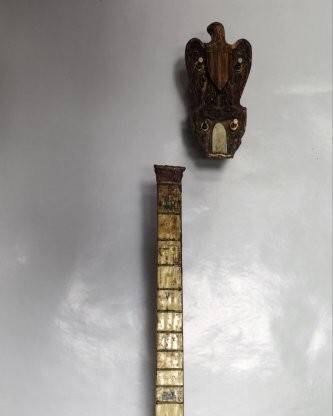
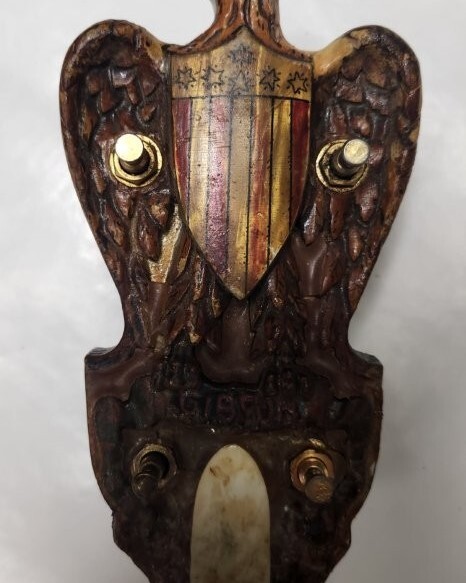
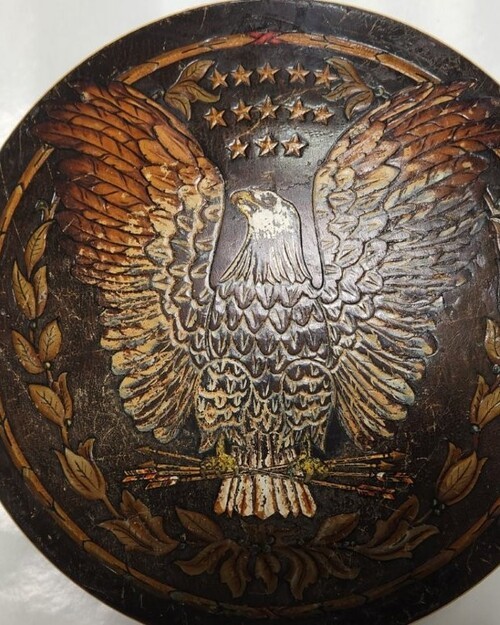
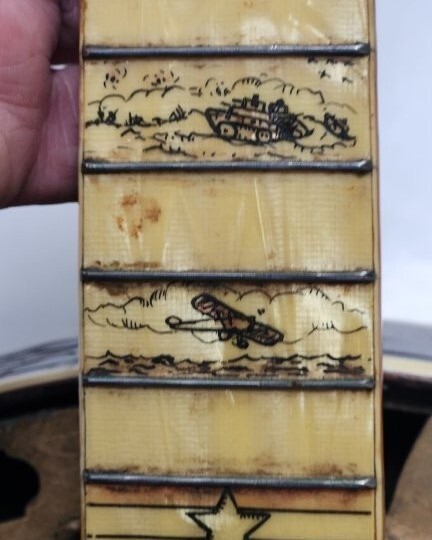
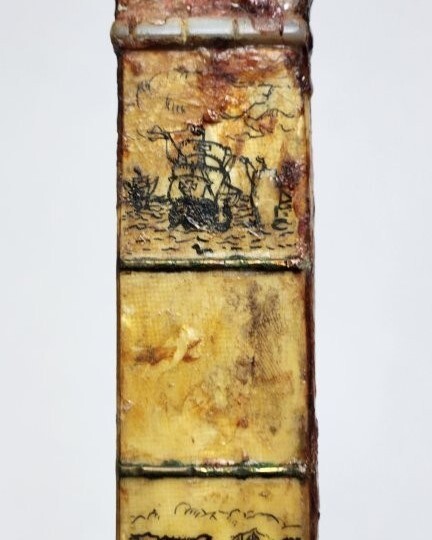
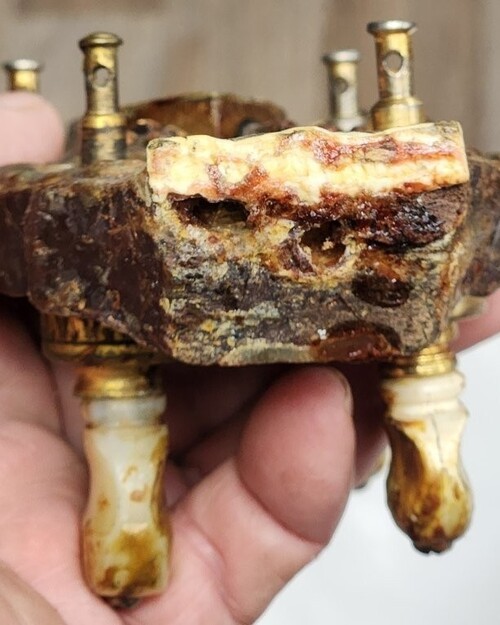
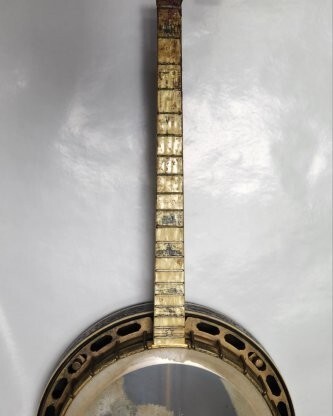
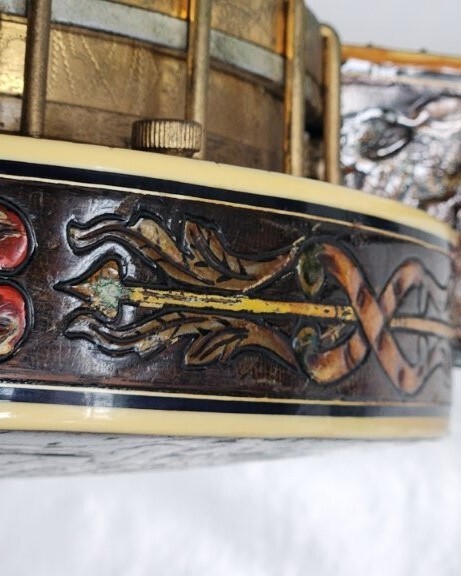
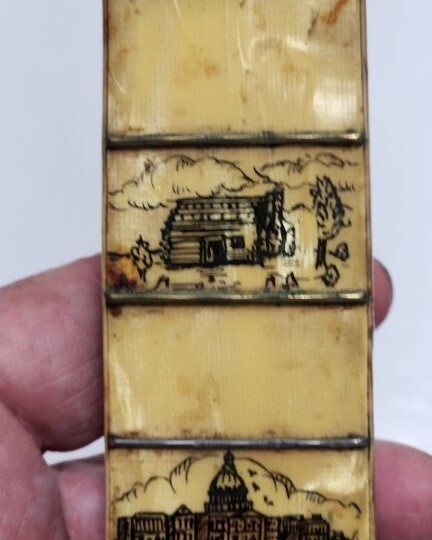
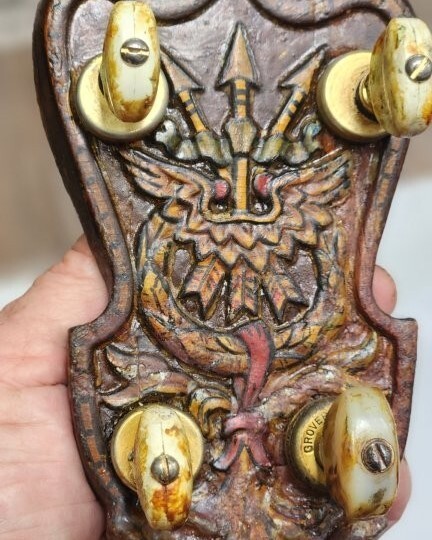
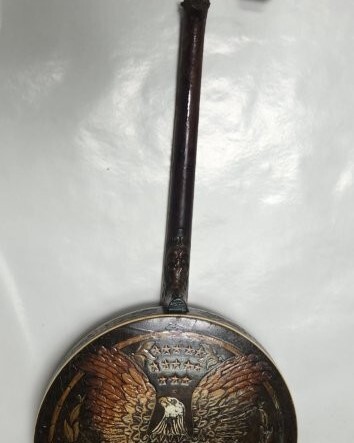
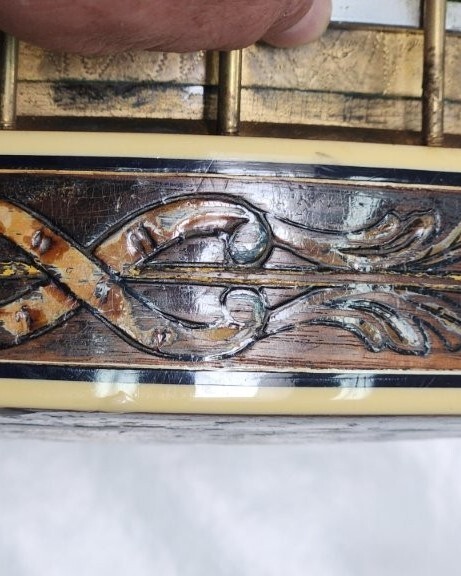
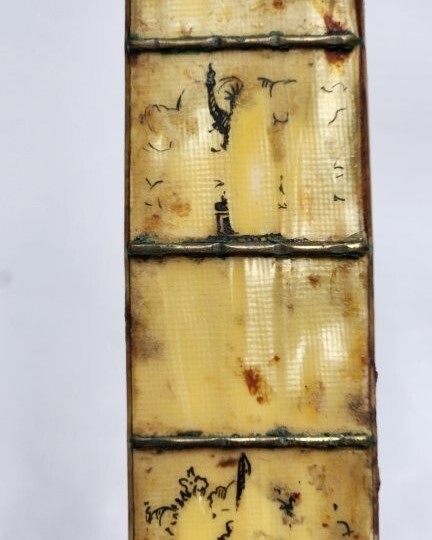
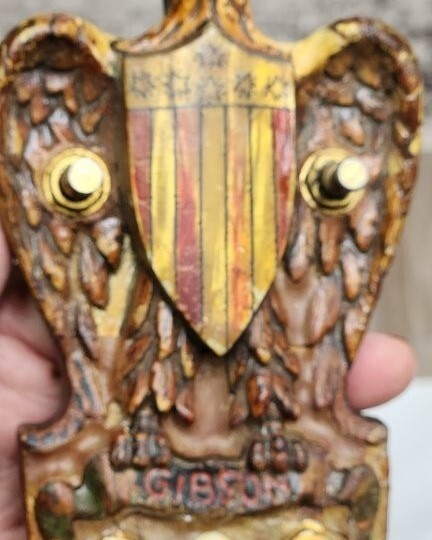
ARRIVAL PICS
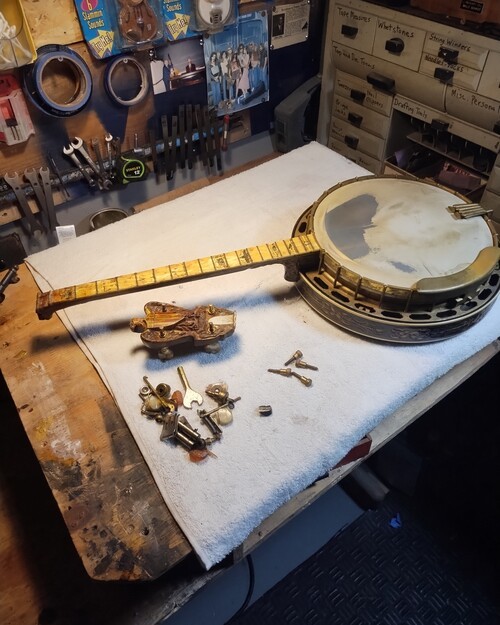
Graphic Image! Beware!
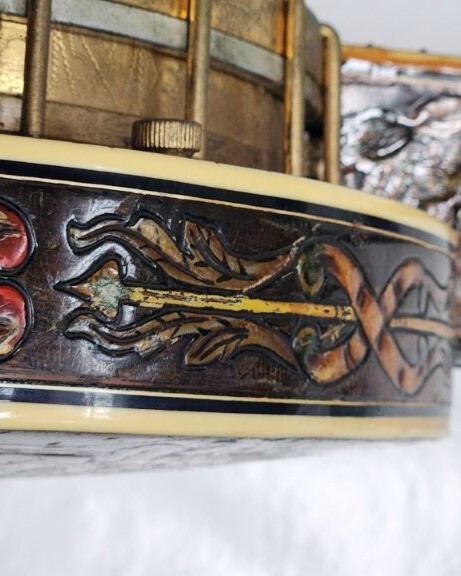
I can see gold paint on skirt and hooks and some small parts,
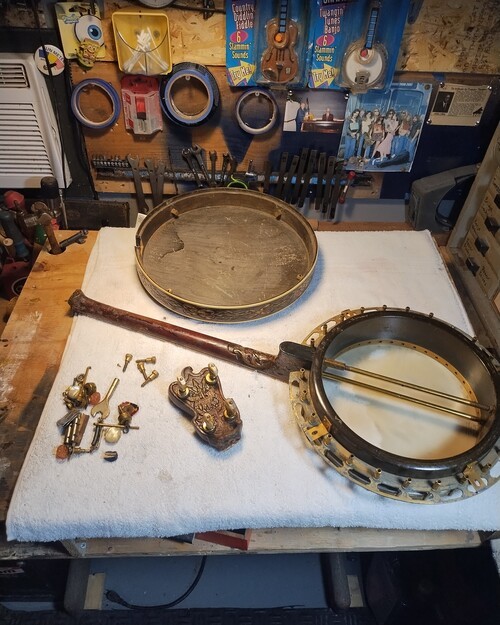
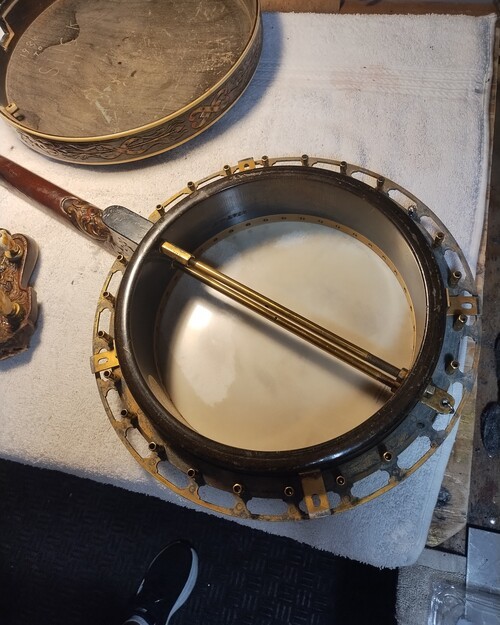
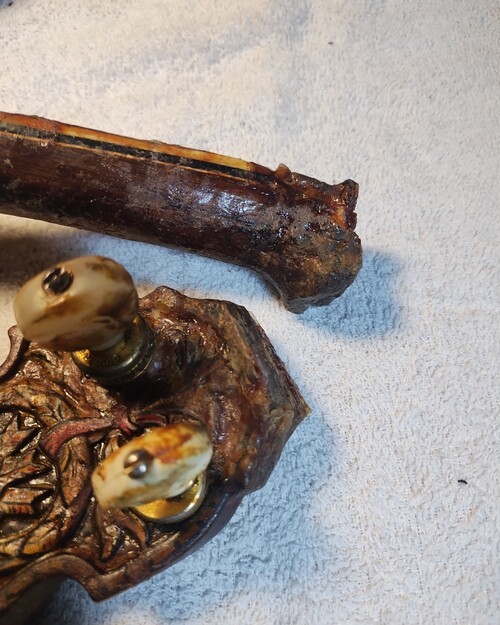
That glue is 3/16 thick at least.
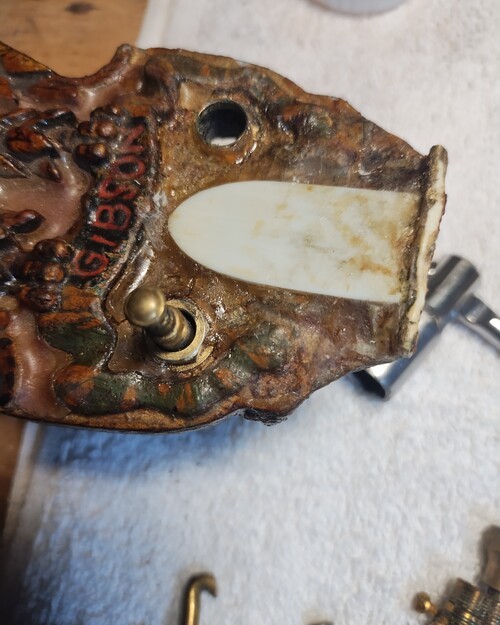
Faux cover over a filled pocket.
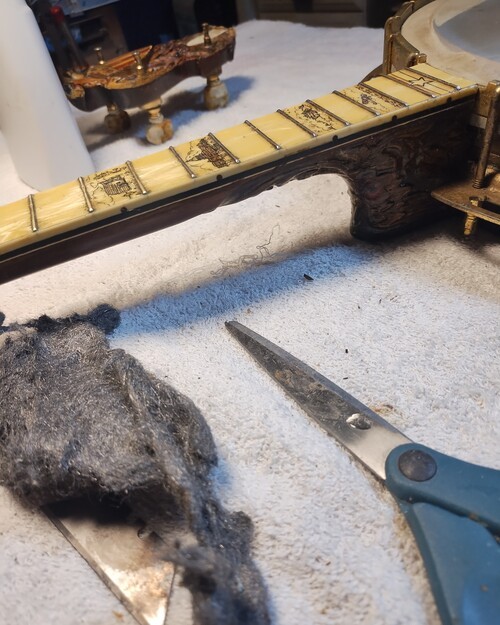
Moving on down the neck, just taking my time.
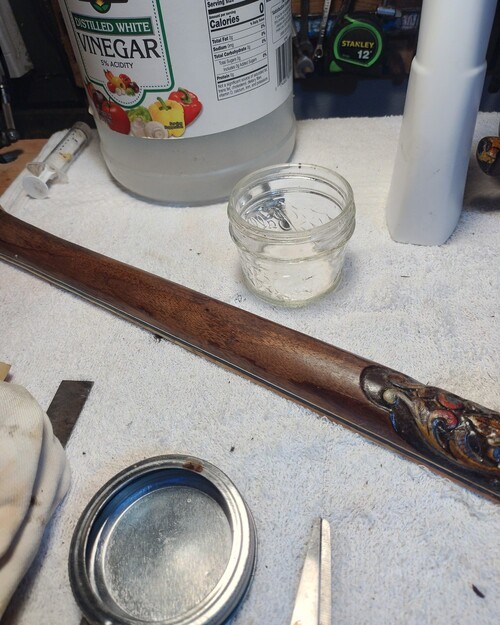
I rubbed some lacquer on for a look,
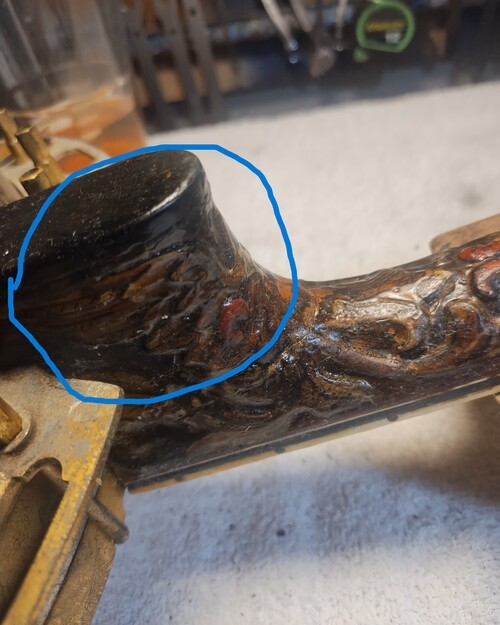
Circled areas denote heep repair.
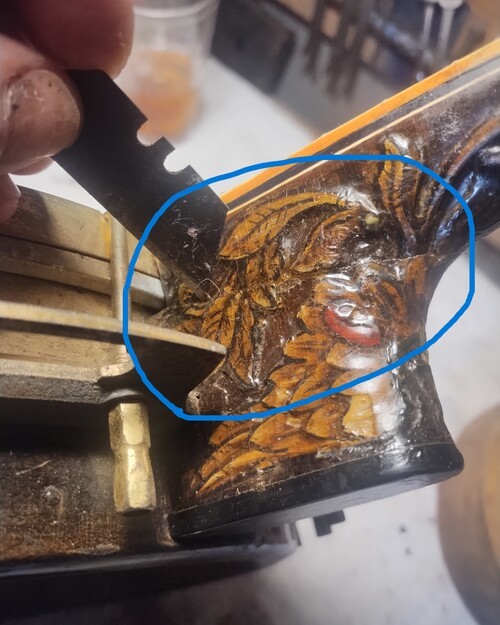
I will see if that is all hide glue later on.
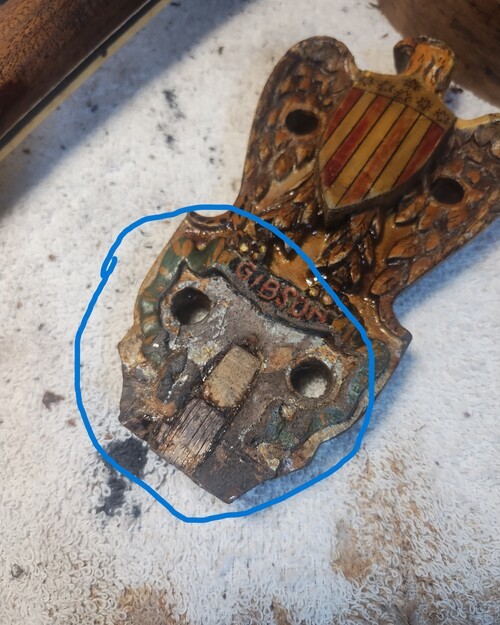
The bottom wood is the attempted repair, that was over the pin they tried.
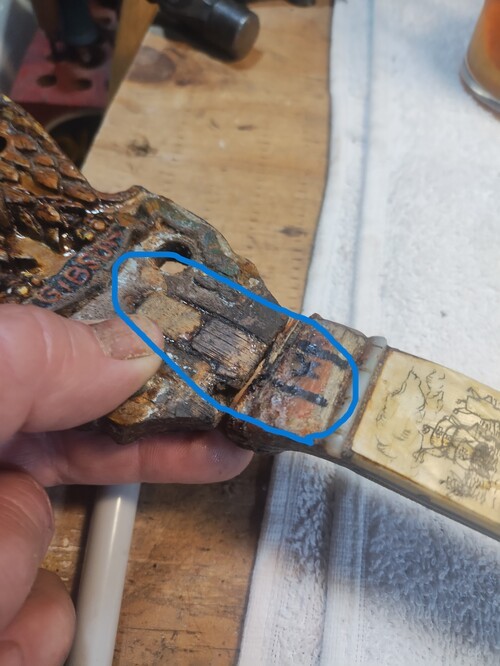
They tried to span it in this fashion.
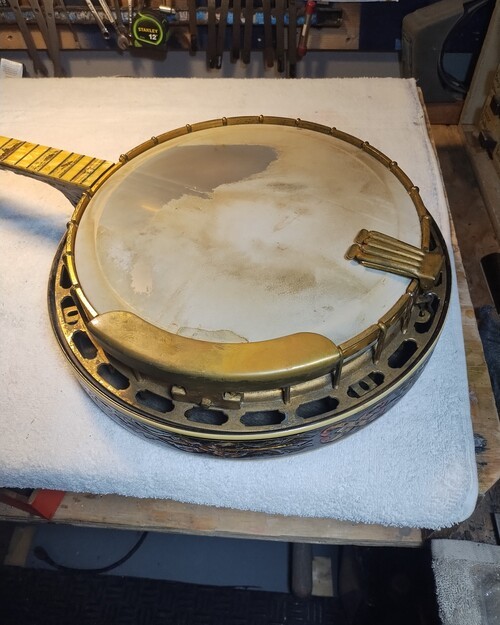
How an extremely well-played banjo looks.
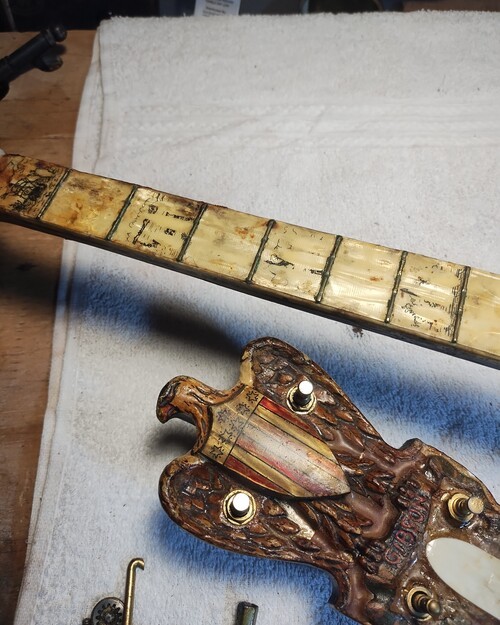
I feel that this is hide glue, by the taste of it :)
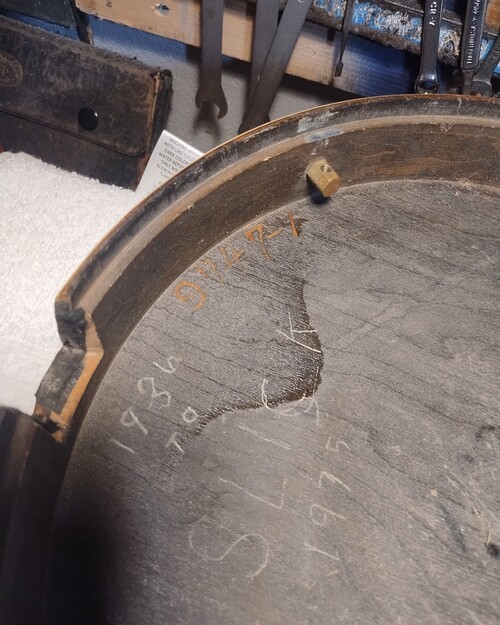
Everything as it should be in here.
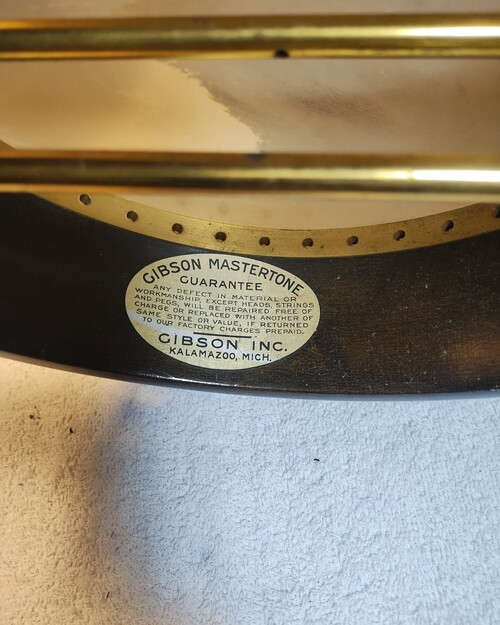
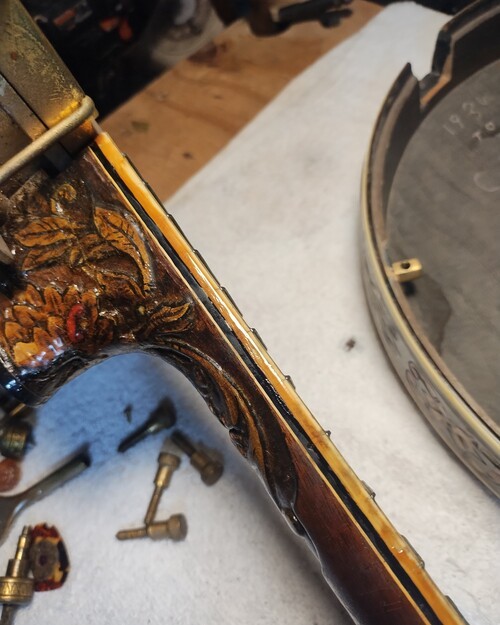
I can see a previously repaired heel crack.
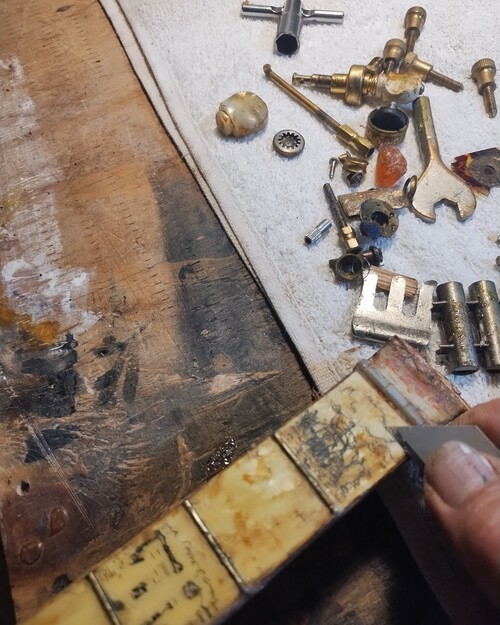
Vinegar and water, carefully lifting the hide glue.
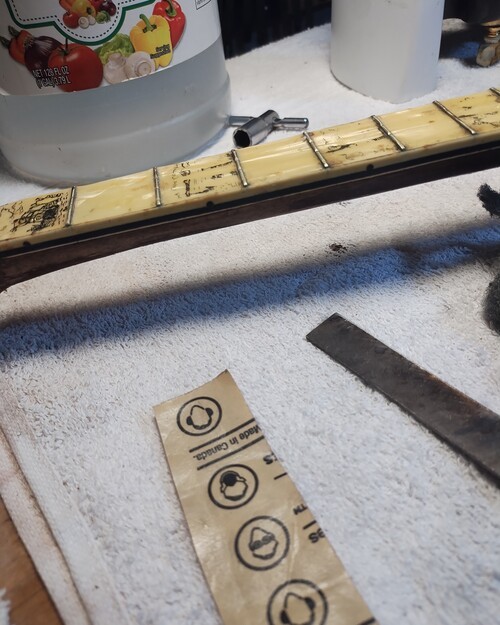
Not a bad result. This is conservation, not restoration.
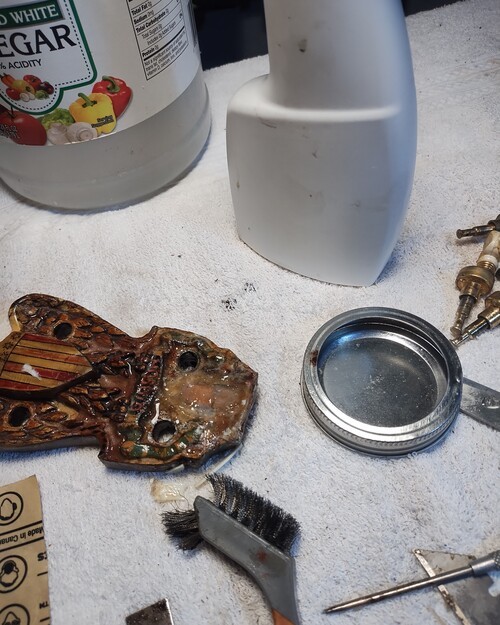
That is a pool of glue. All discoloration is glue.
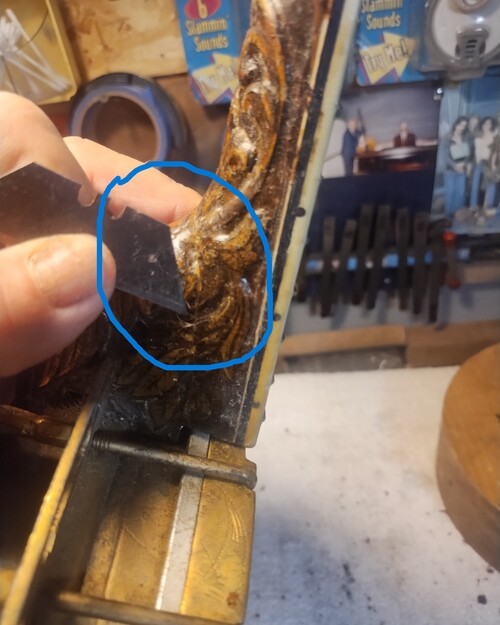
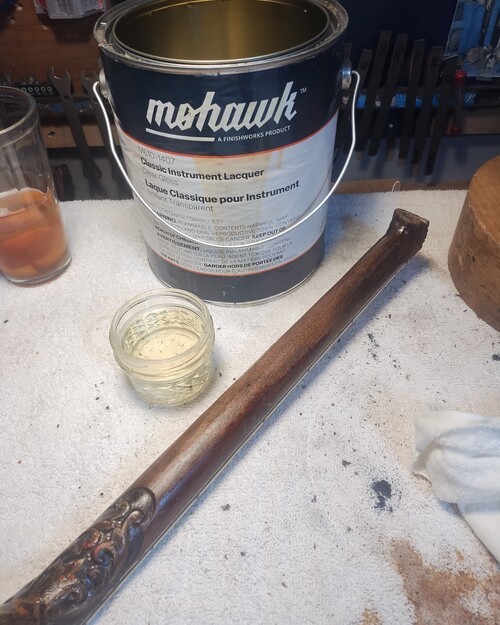
A little more Mohawk rubbed on, this will be nice for the conservation.
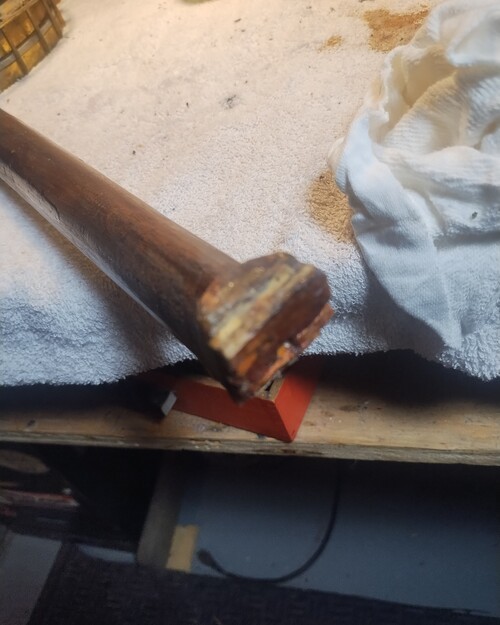
After glue removal, some wood missing, replaced.
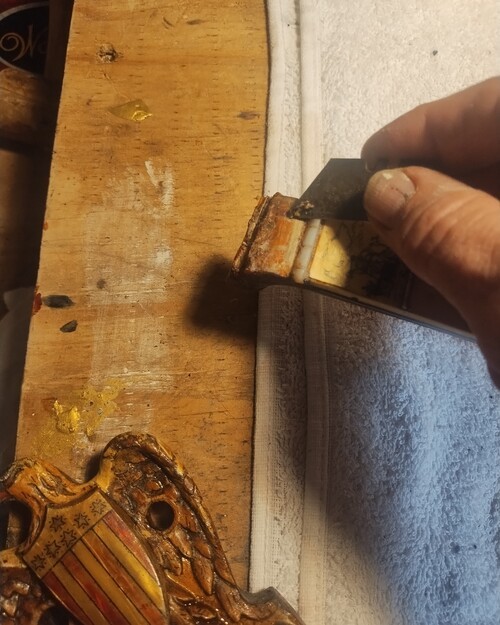
I will see what is wood and what is glue soon.
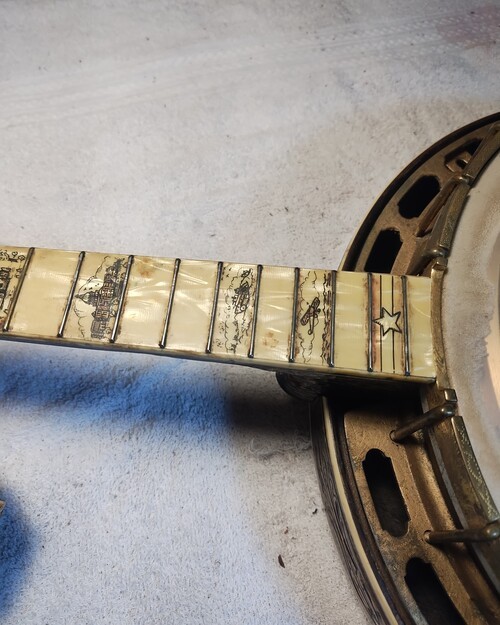
1 piece flange has light flairing, has been painted over.
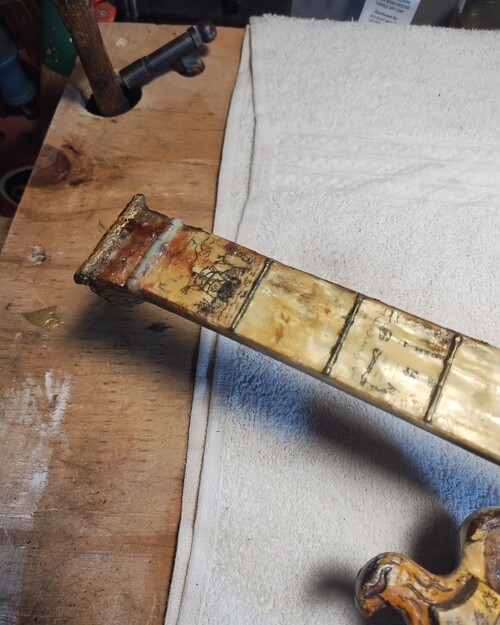
I will try vinegar and water first.
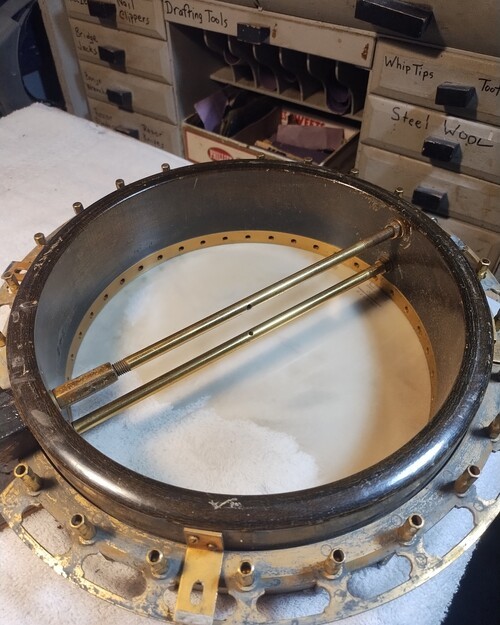
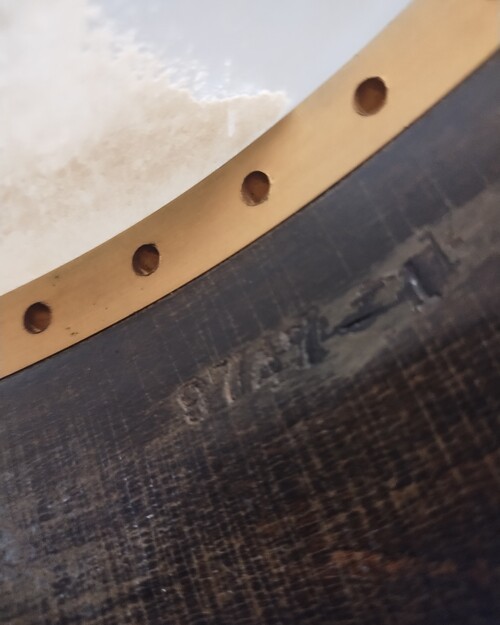
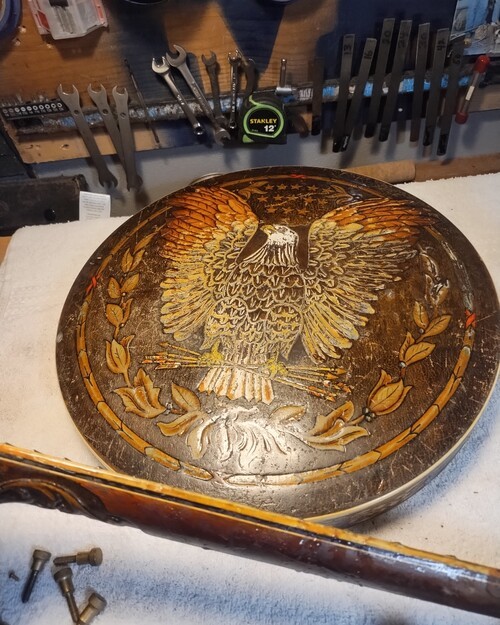
All of that brown on binding is glue, not finish.
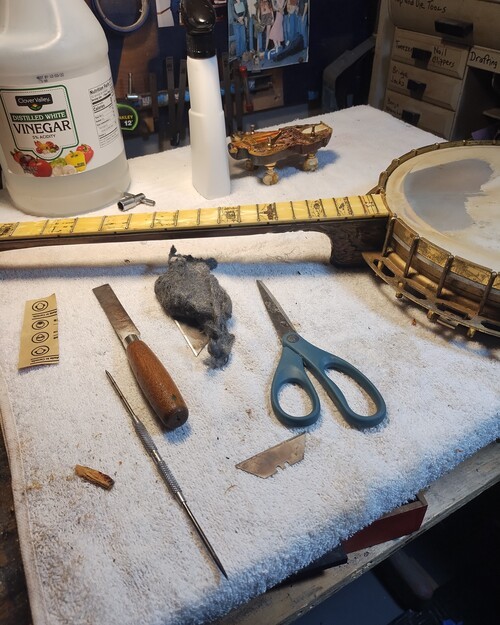
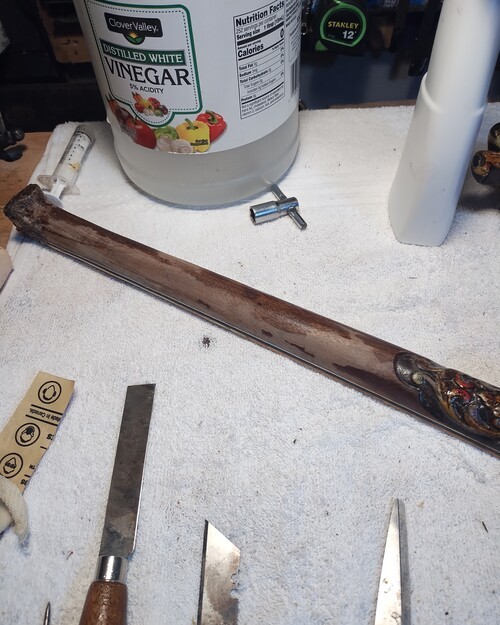
After all of the glue on the neck removed, that is what finish was under it.
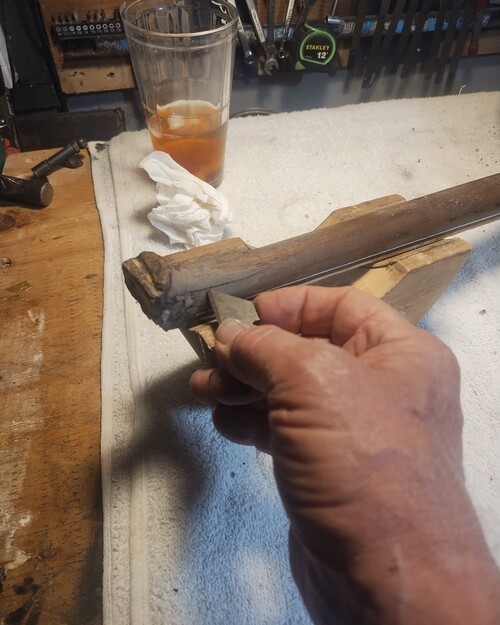
More of the original break.
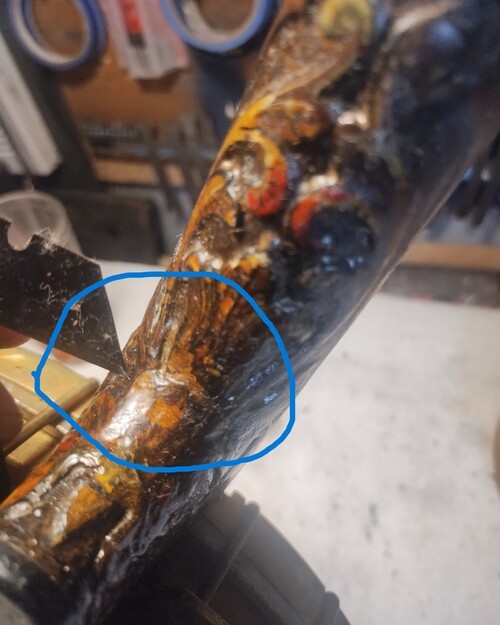
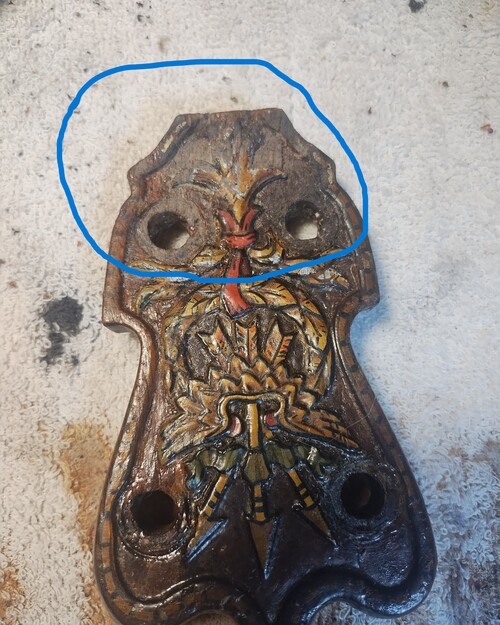
All pooled glure removed from the back.
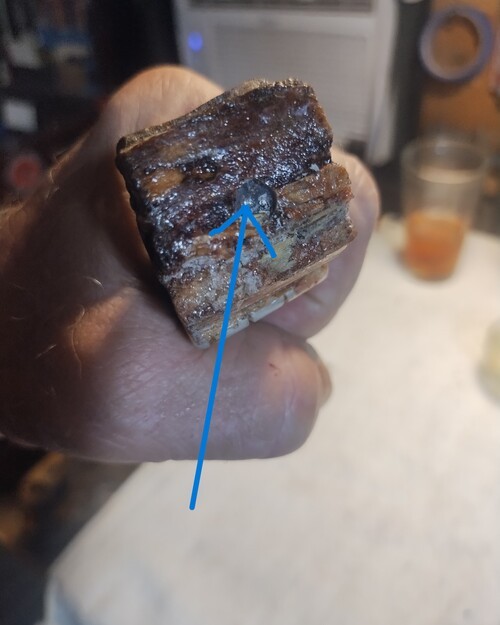
That is either the broken pin, or the tip of the orig. truss rod.
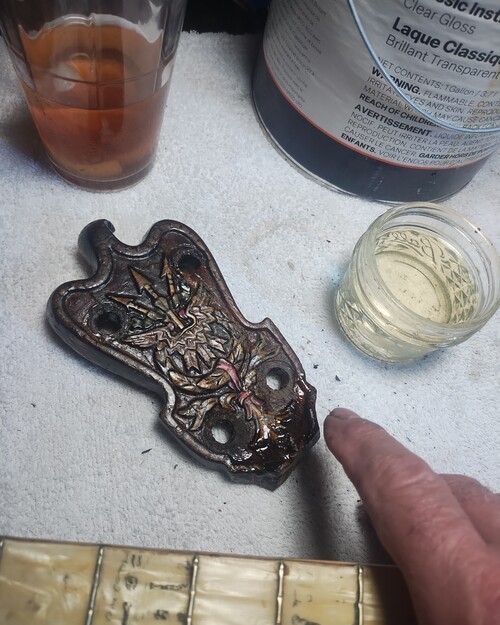
Daubing a little clear where all of that glue was.
Sequence #2
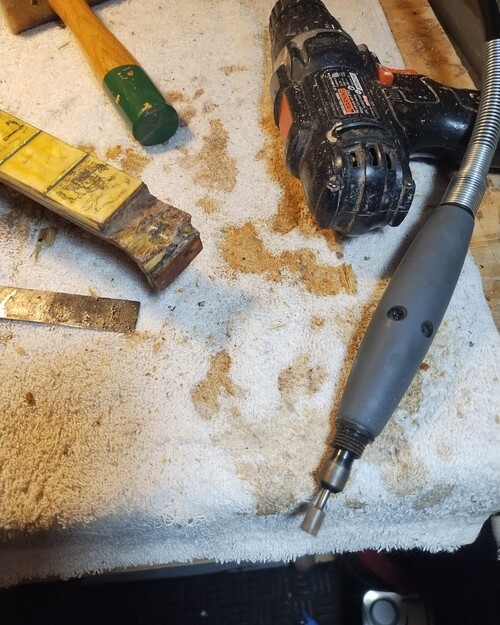
Previous repair compounds removed.
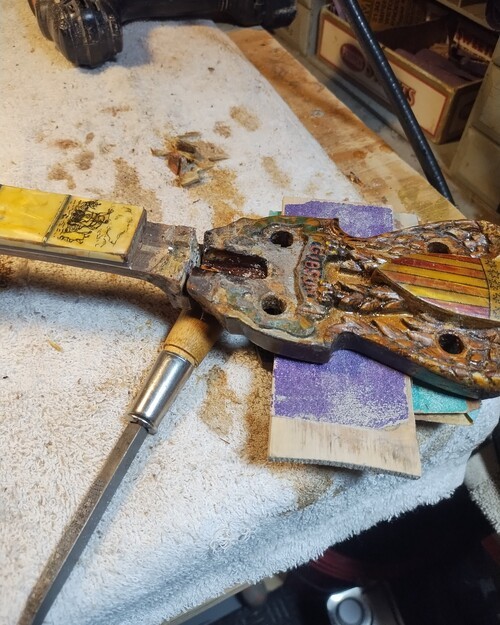
Looking and thinking...
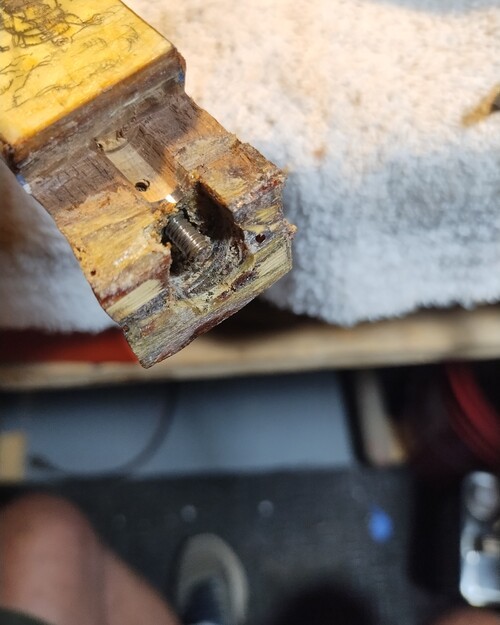
Came off nicely...win.
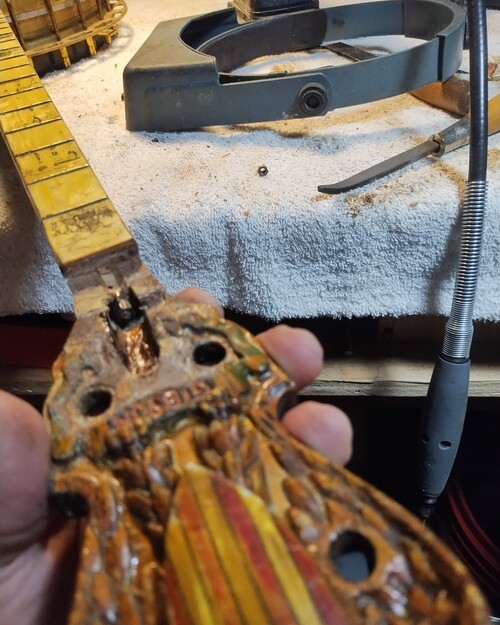
The beginning of the new pocket takes shape.
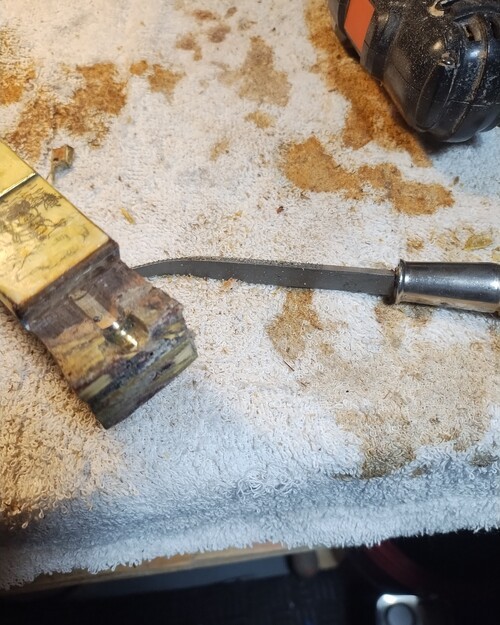
That is the brass truss nut and backing plate.
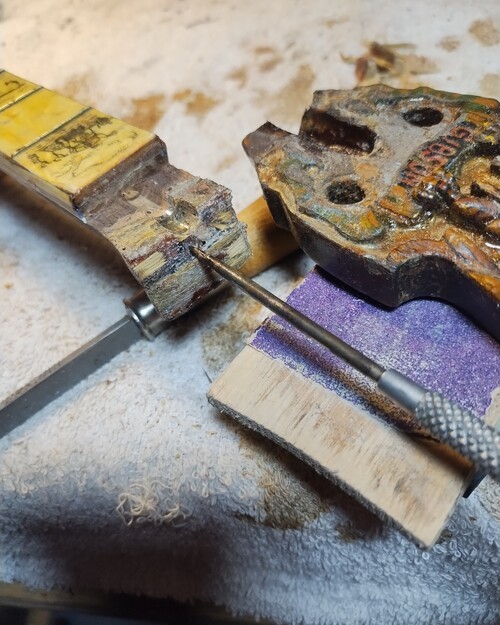
That is the tip of the truss rod, not a repair pin.
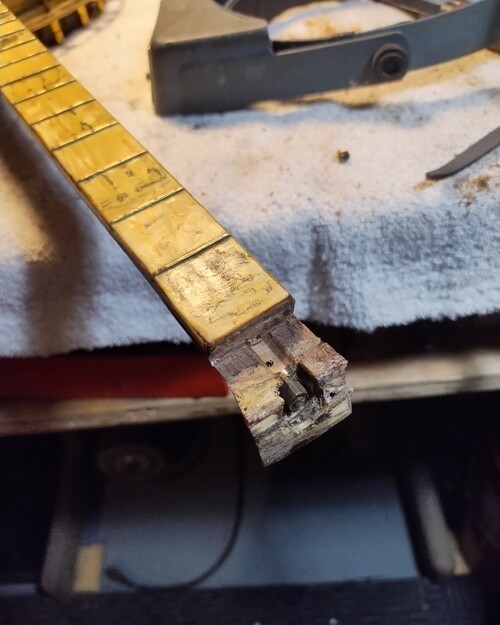
Replacement nut.
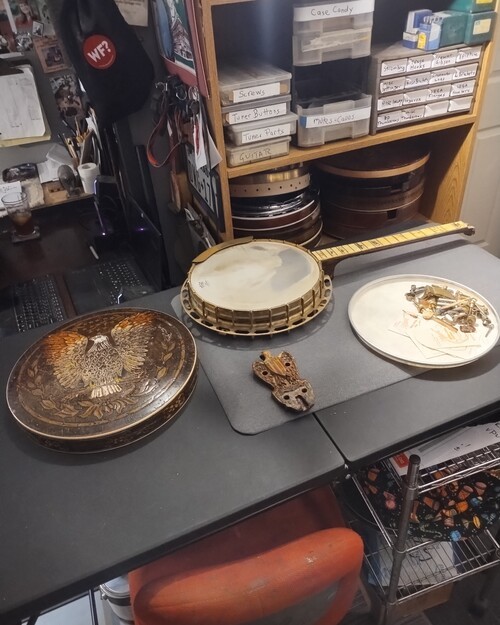
Intense! break time!
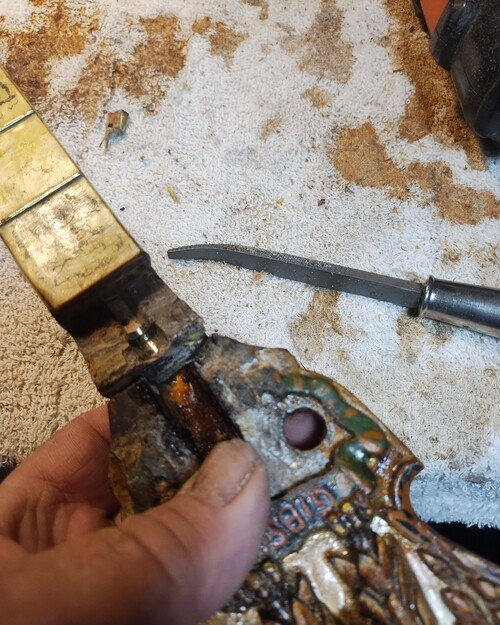
I will re-form the truss pocket in this manner.
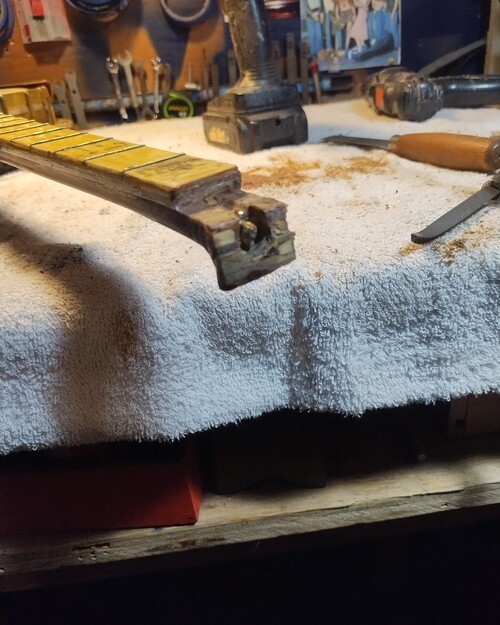
There is what is left of the nut.
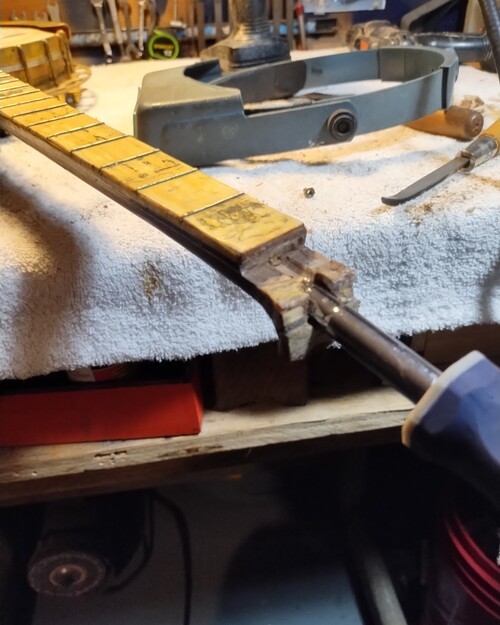
And it works. Win #2.
Sequence #3
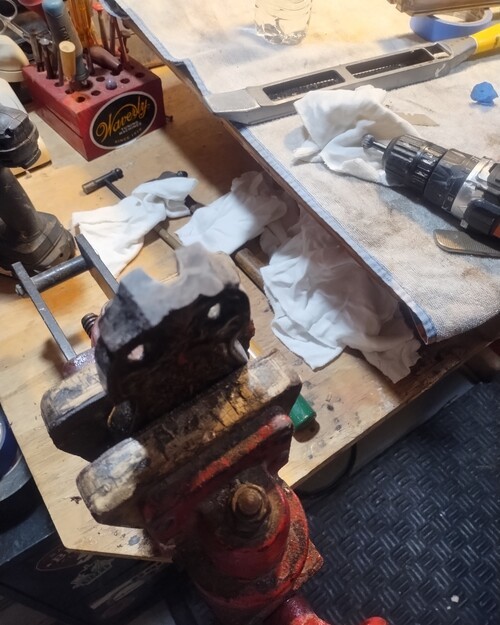
Making the face of the peghead flat.
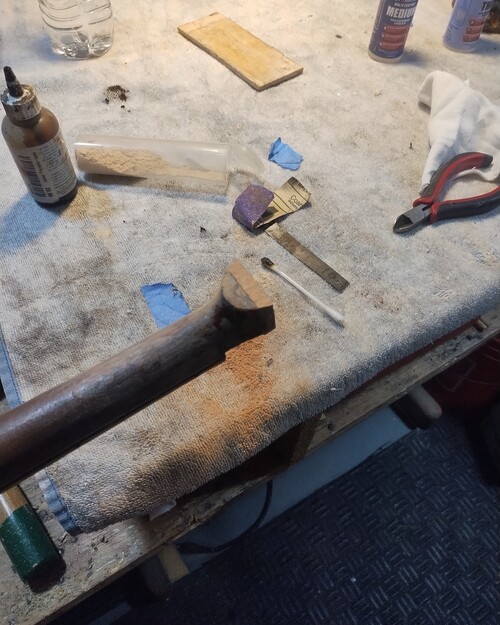
Making a box with matching grain mahogany.
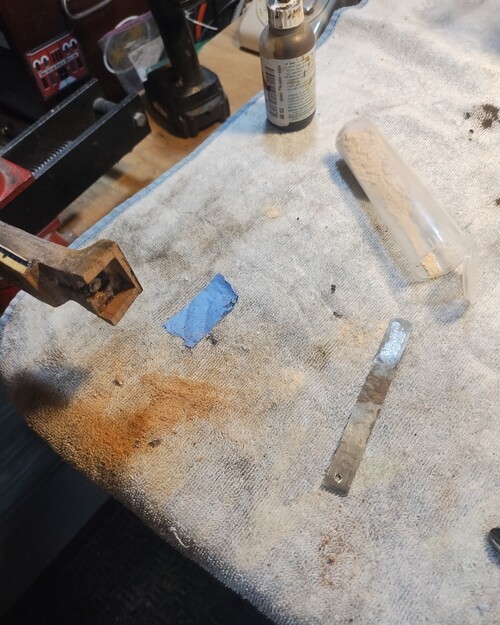
Here I will rebuild truss pocket.
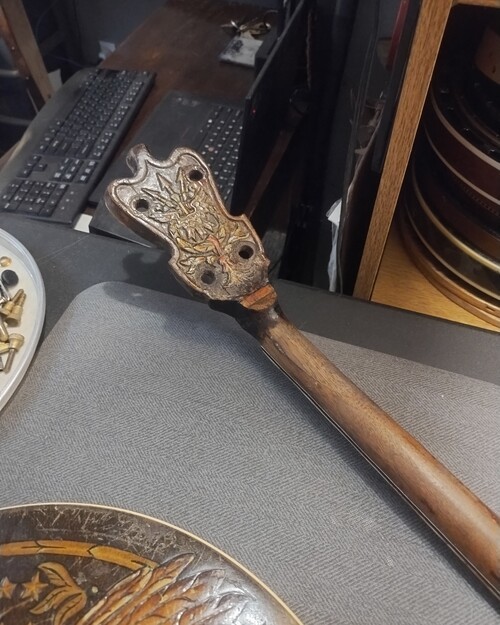
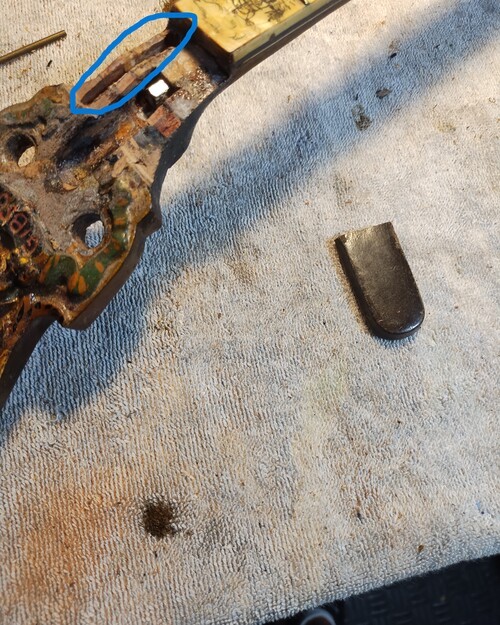
Cutting channels for reinforcents.
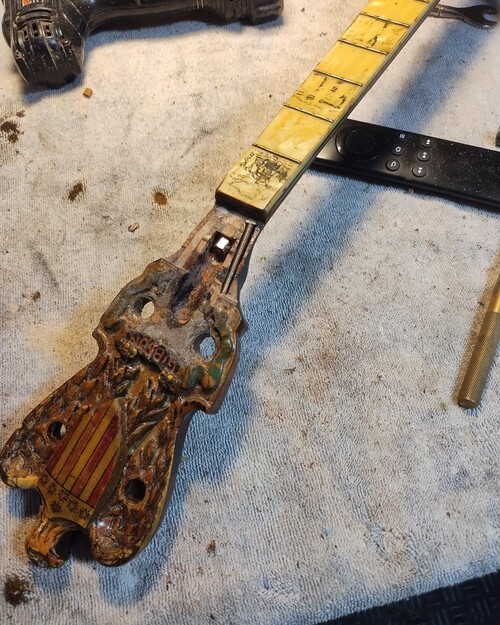
Repeat. The screws span all 3 sections of breakage..
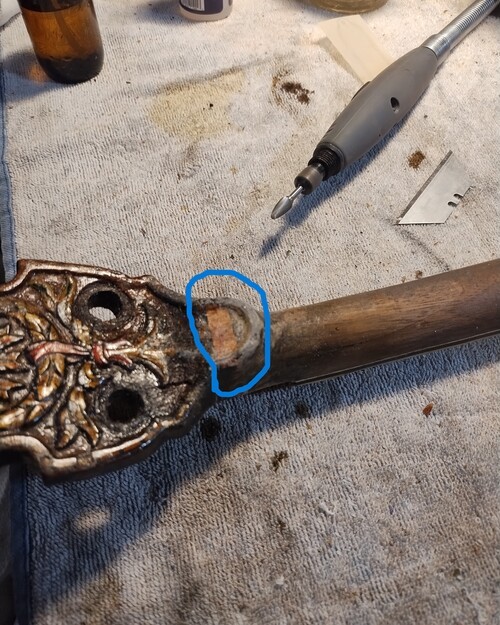
Rebuilding raised area on heel.
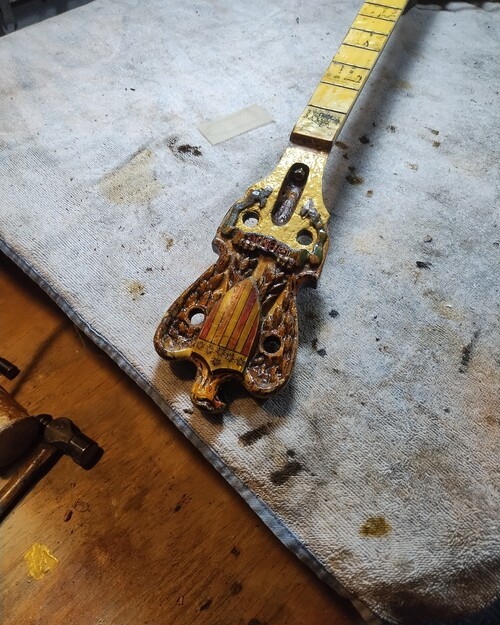
Added base coat and correct looking texture.
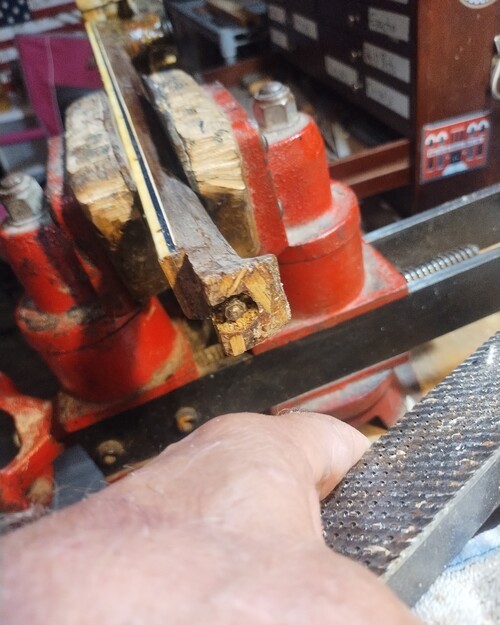
Removal of all old repair wood.
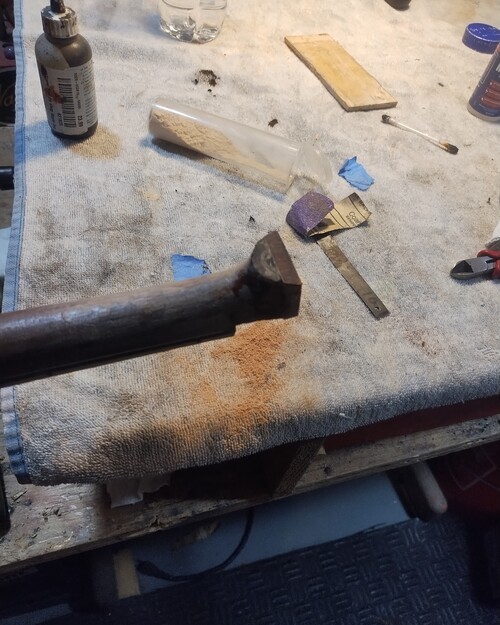
Testing stain.
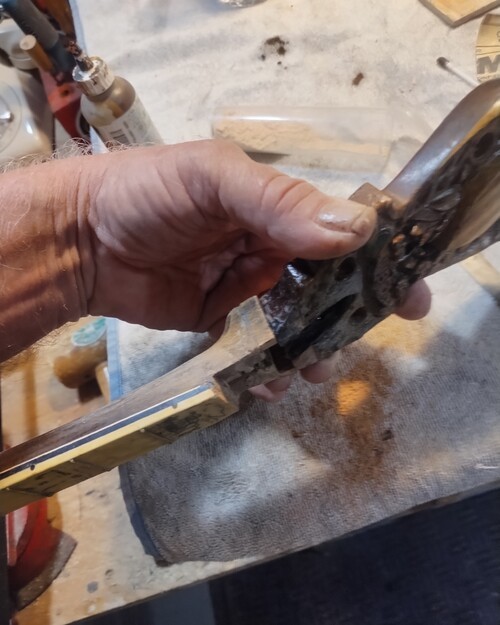
Time to pin it back together.
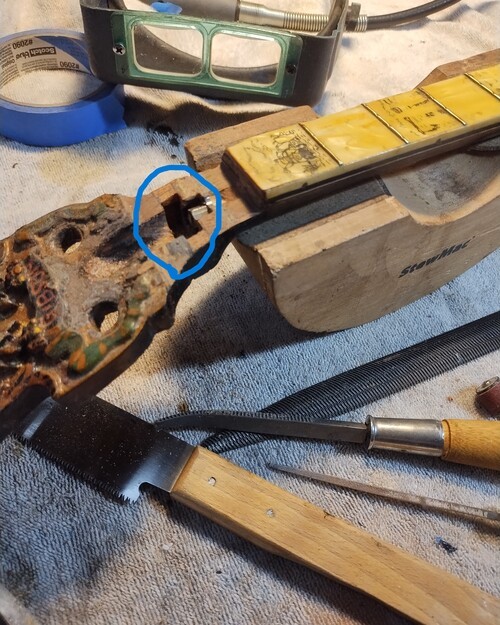
This is a key cut for an insert to bridge the gap.
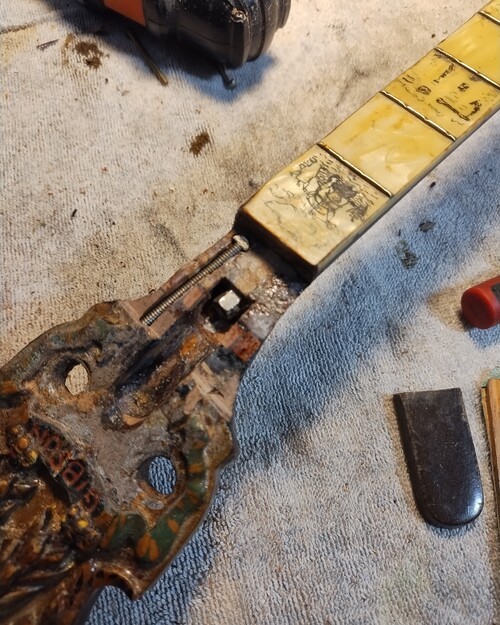
Steel screws with head cut down.
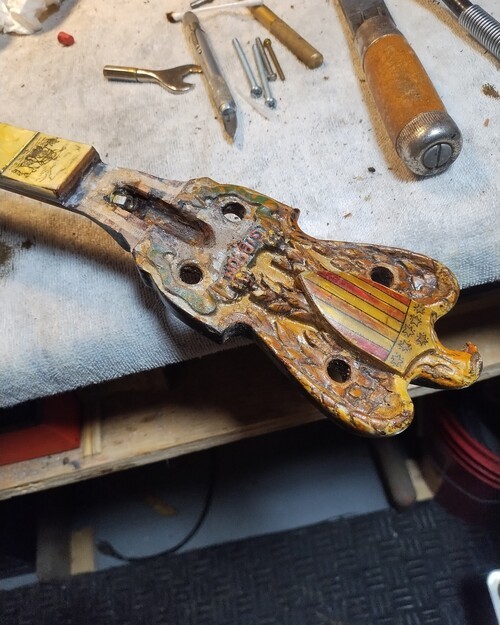
All bedded and leveled. Recessed for veneers.
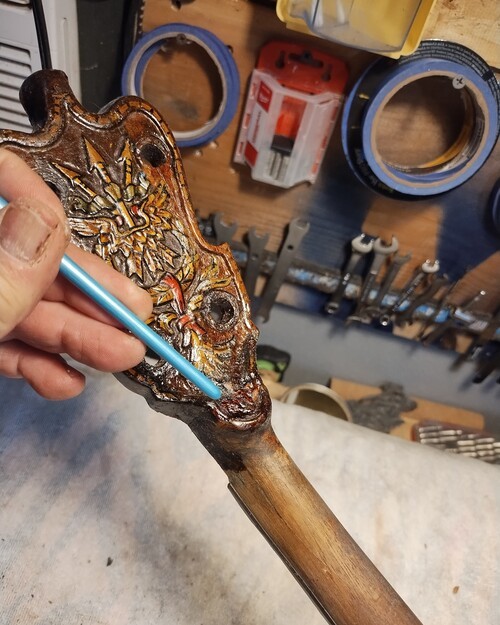
Where I added a little stain.
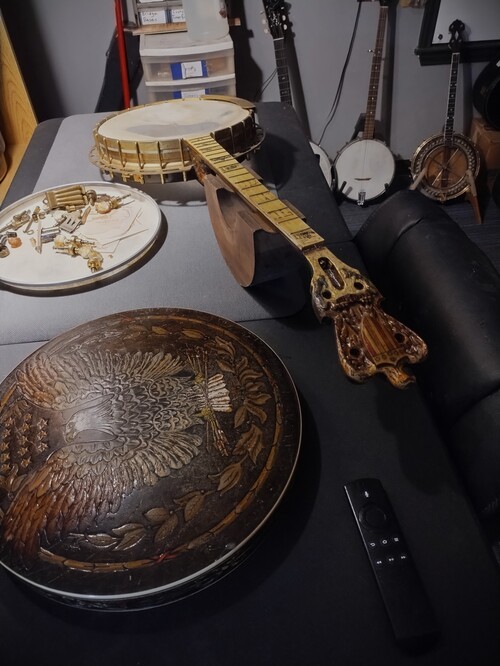
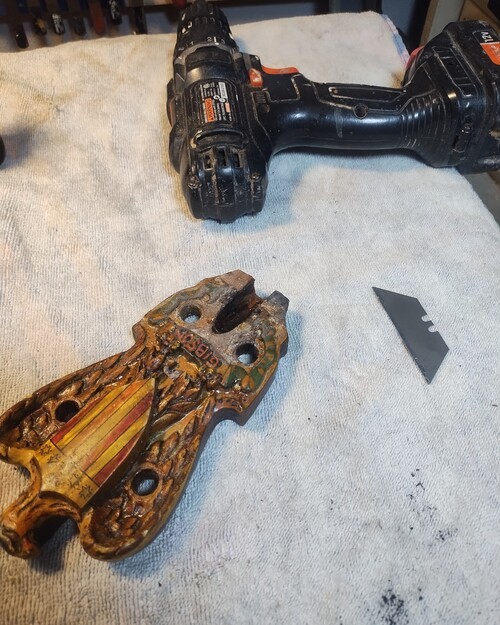
Prep on peghead complete.
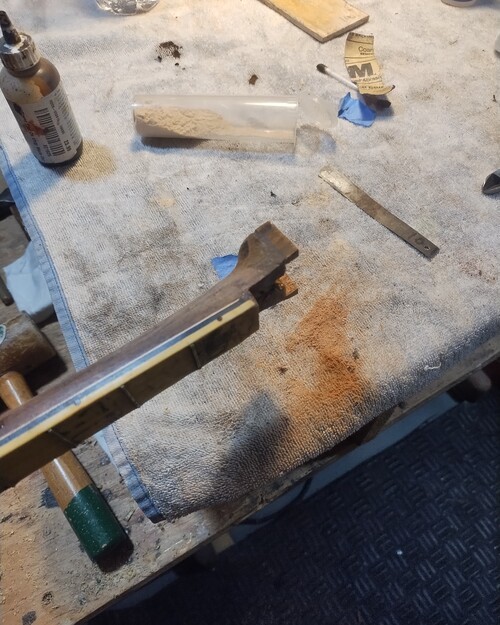
Box sides.
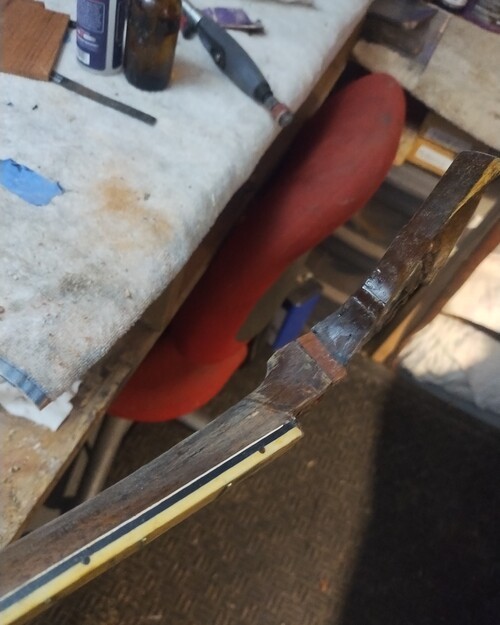
Adding stain, checking profile.
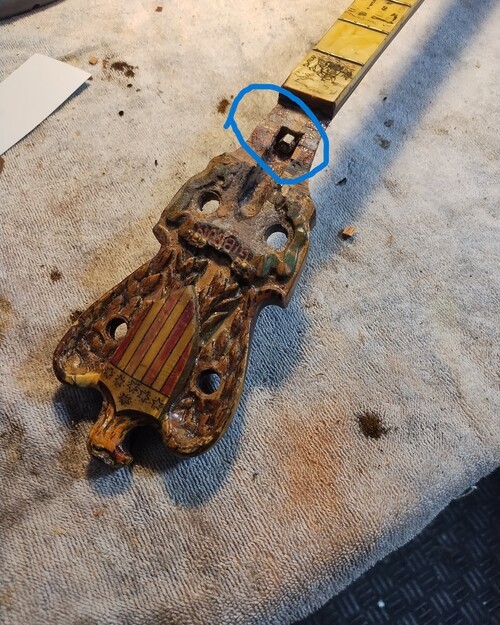
Key was cut to profile and bedded.
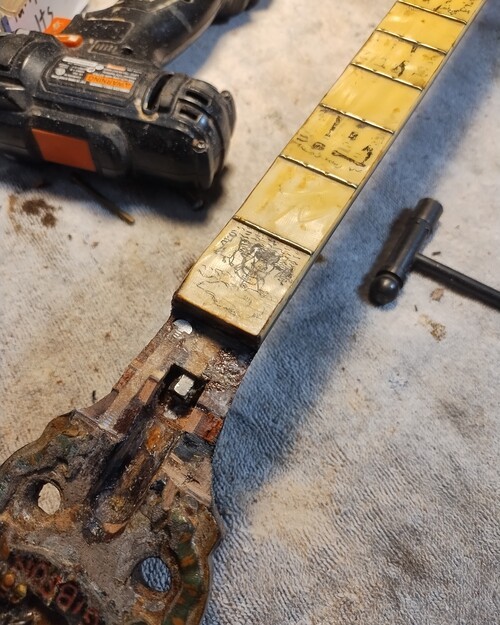
Bedded in epoxy/wood flour.
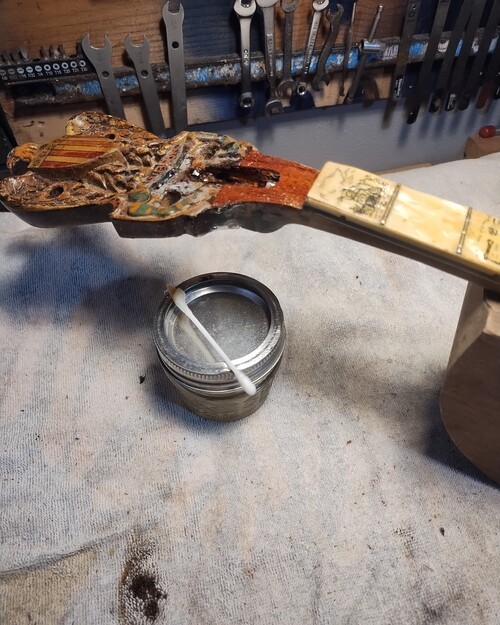
2 layers of mahogany veneer.
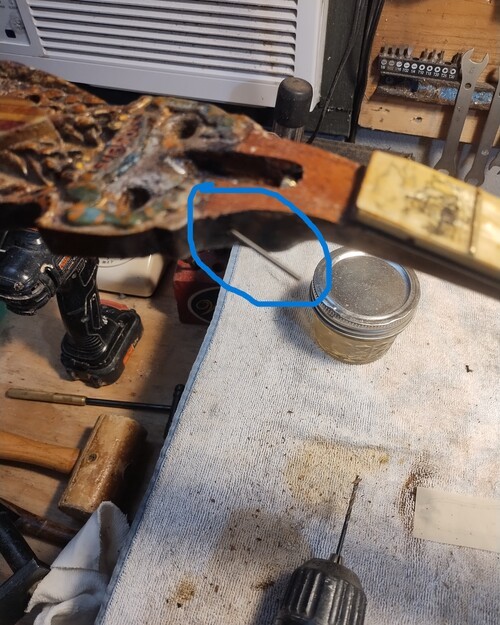
A pin will be in each side at this angle. as well.
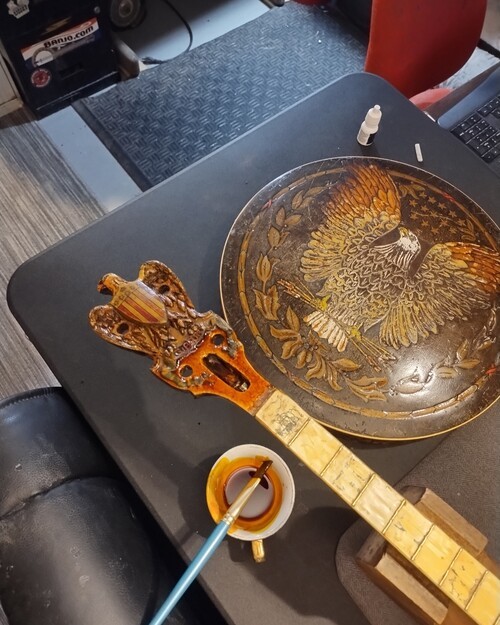
Some amber tint to give it a vintage look.
Final Sequence
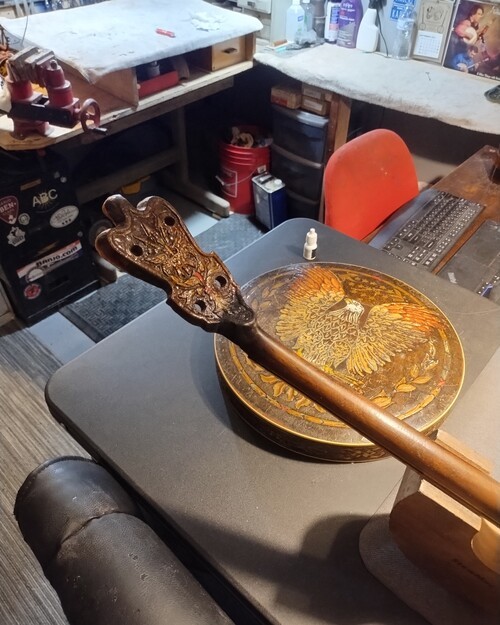
A light coat of clear over spot tinting, and some fine wool to satinize it.
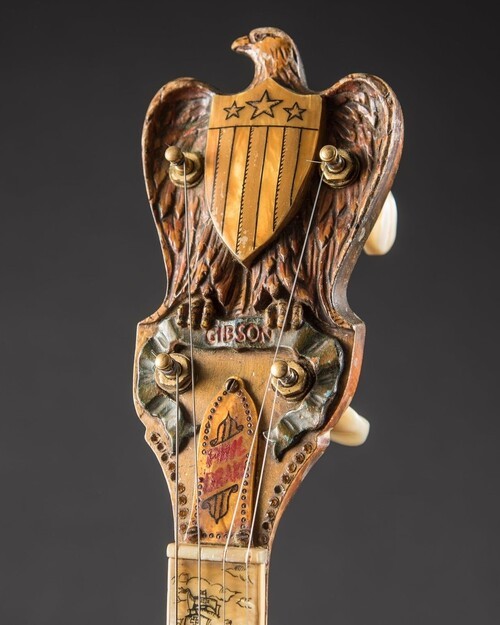
EXAMPLE
From Carter Vintage archive.
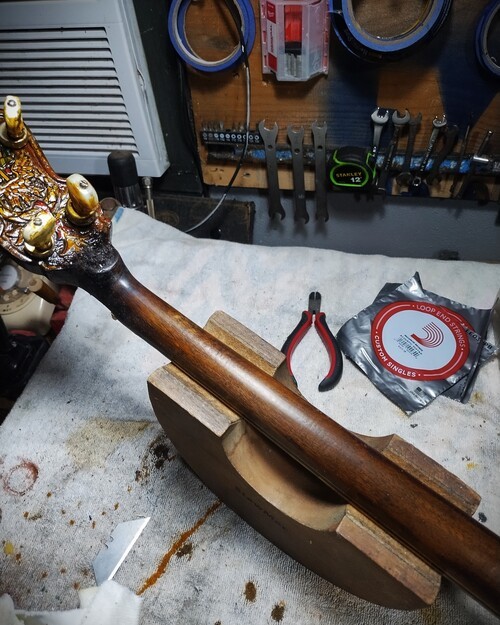
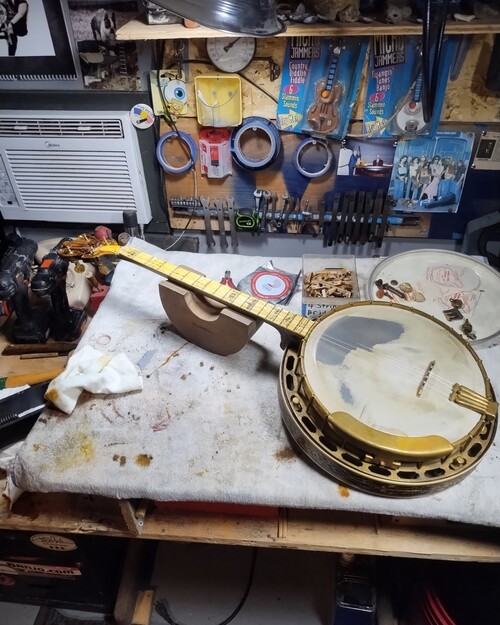
Strung up and tuned to CGDA, so far, so good.
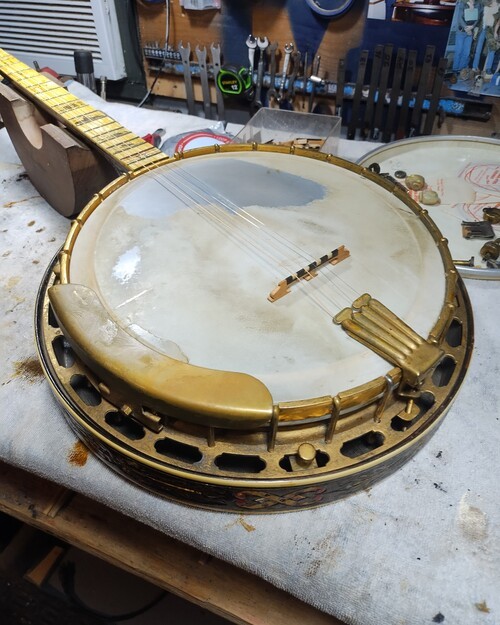
No change, no cleaning of rim assembly.
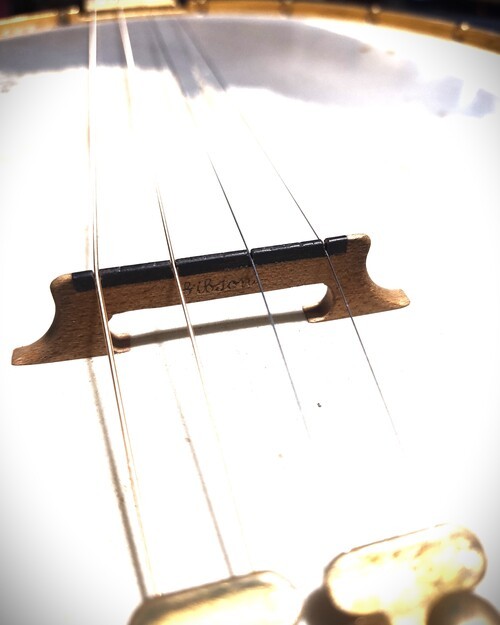
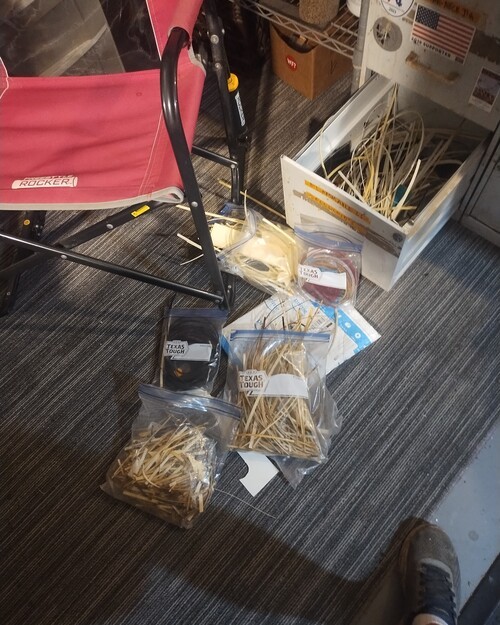
Looking for that piece of white celluloid...
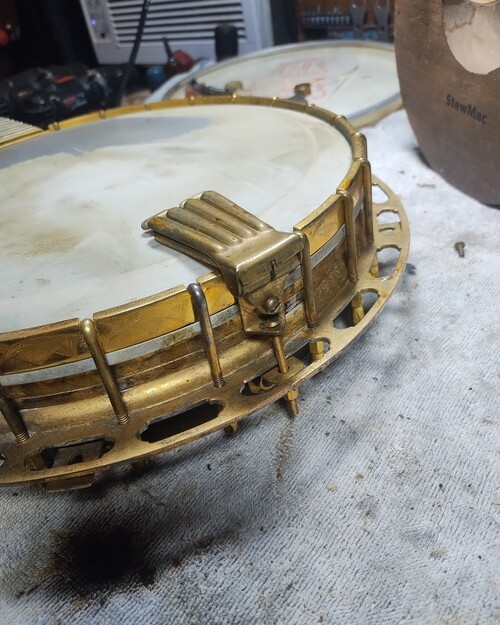
Correct screw and hangar bolt/nut
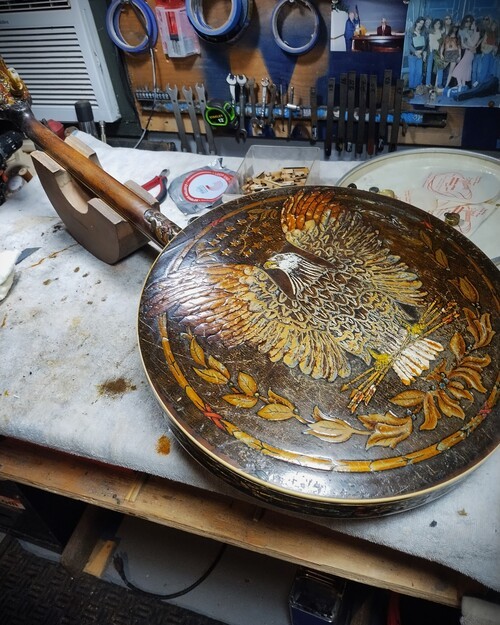
Light coat of wax, no cleaning.
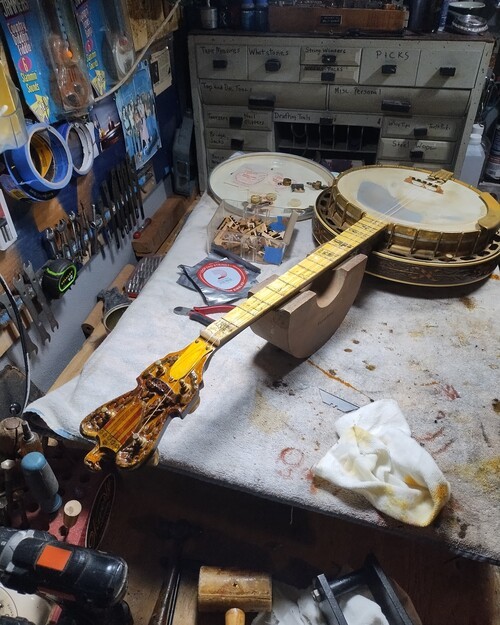
Truss cover tinted and smear patina added.
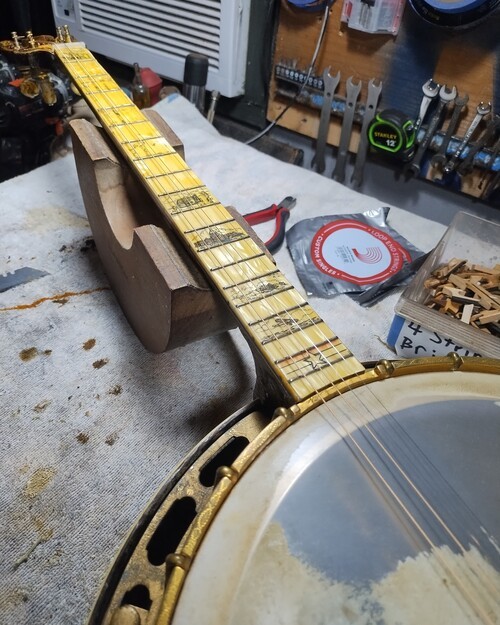
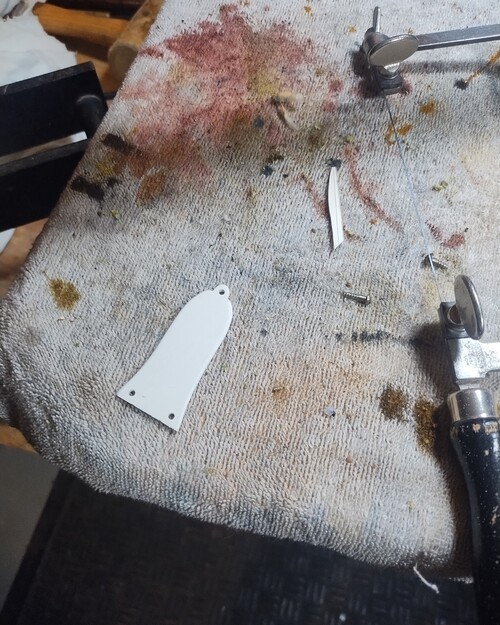
Found it and cut a 3 point truss cover.
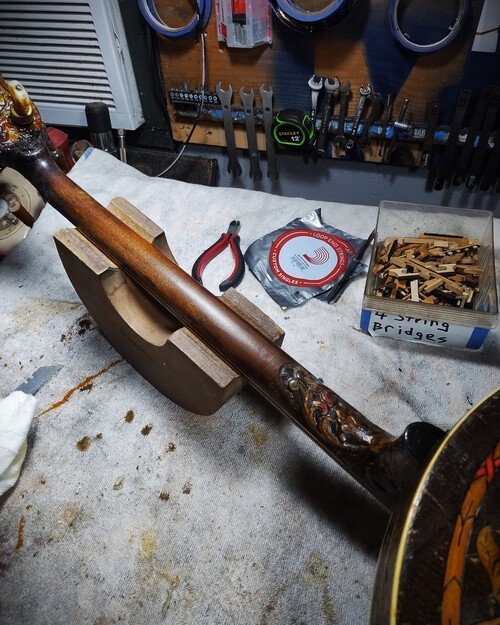
After fine wool to satinize the finish areas
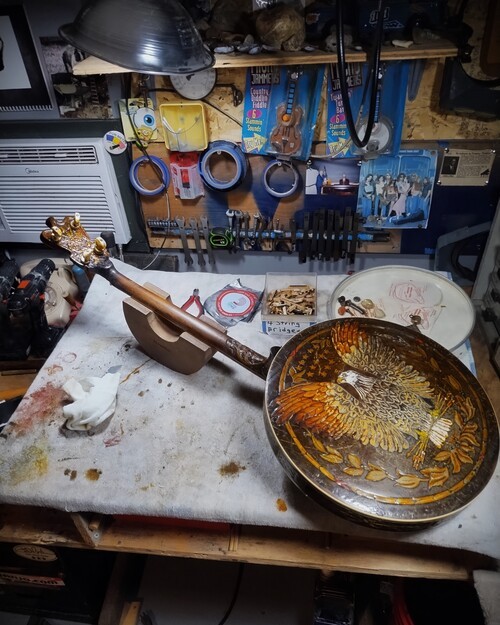
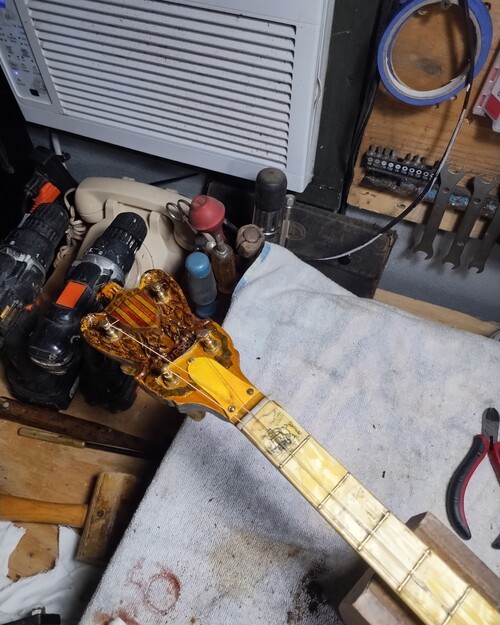
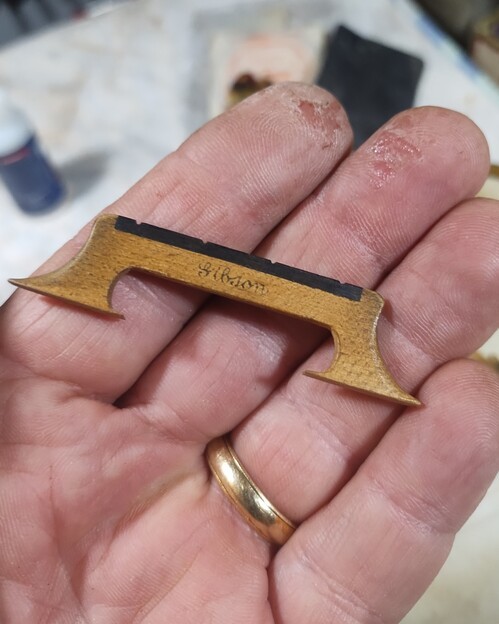
I found this gem in my old bridges. Sweet.
FINAL PICS
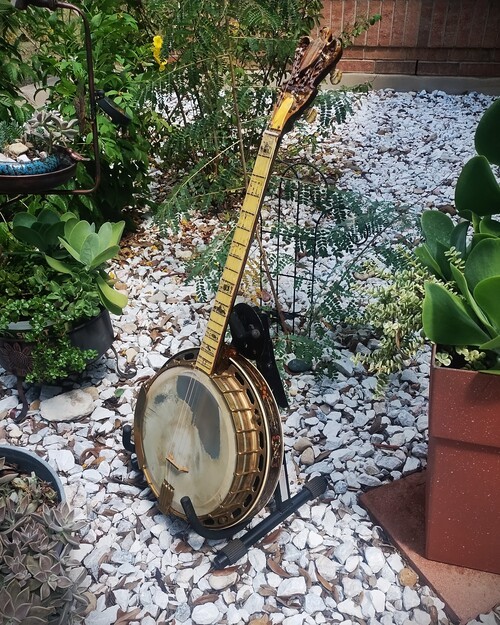
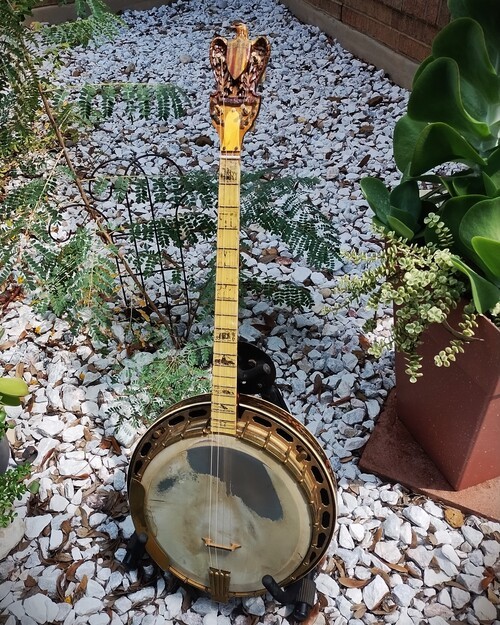
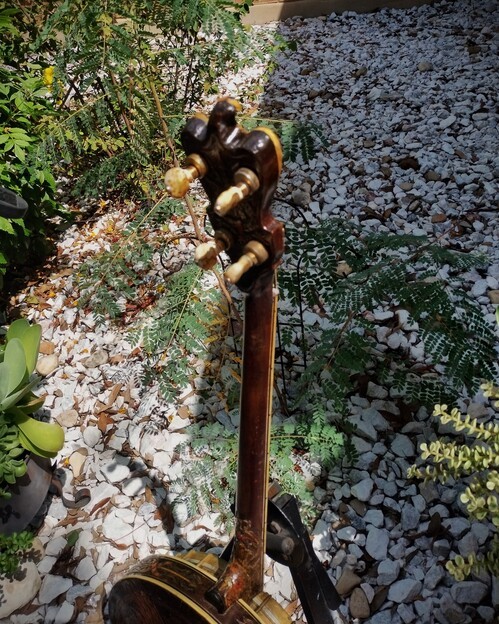
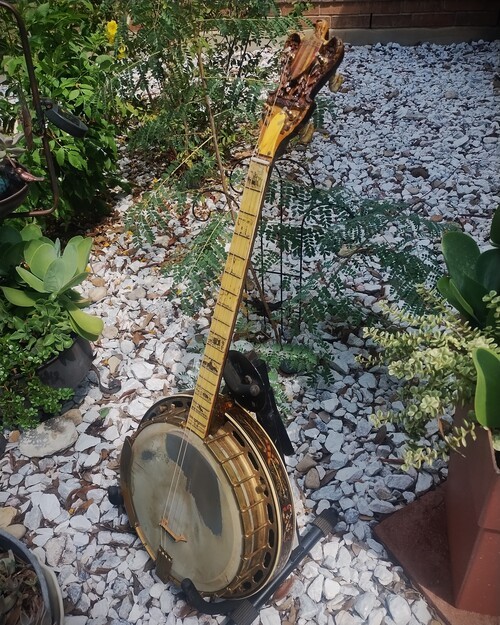
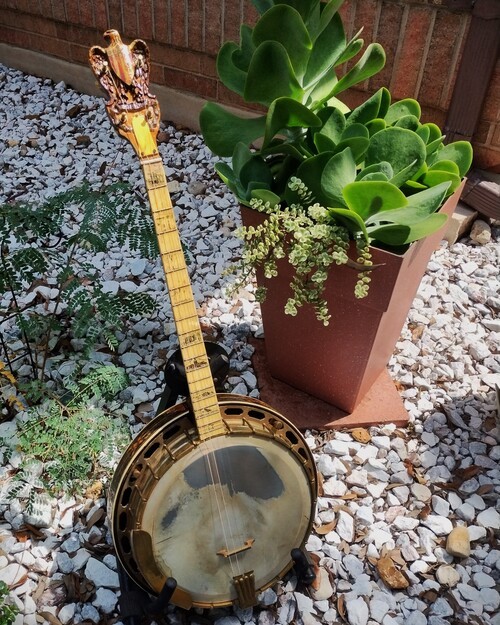
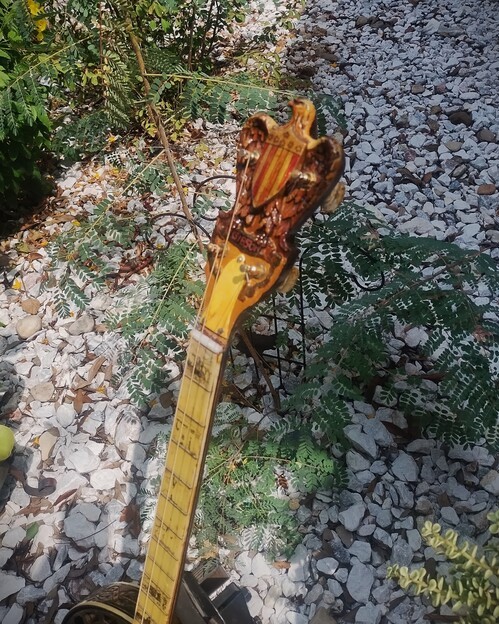
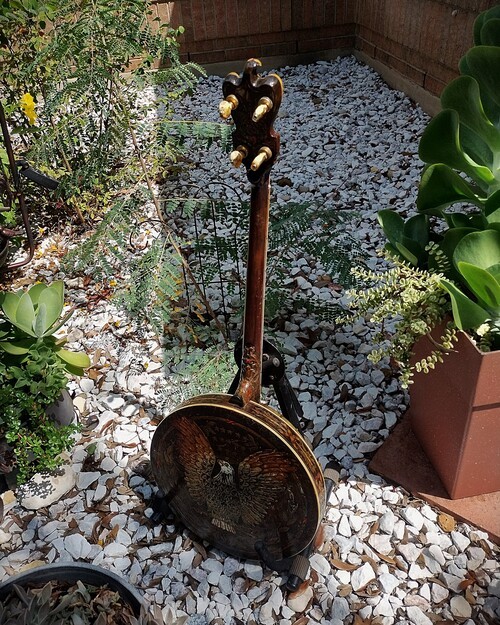
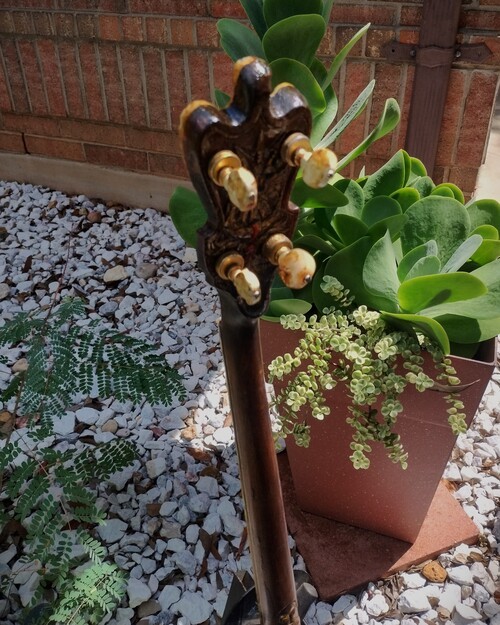
This banjo was left in the state that it was in when last played, other than the necessary repairs. It is this way to represent what 1930's Musician on the Western Swing circuit would play and the condition it would be in from many years of constant and hard use with only it's demise stopping it.
So the history remains, and Tricia's Dad's banjo can now make music again.
I am honored to have been a part of it's journey.
To "Slick"
" She is hittin' on all four cylinders again. "
Vin
So the history remains, and Tricia's Dad's banjo can now make music again.
I am honored to have been a part of it's journey.
To "Slick"
" She is hittin' on all four cylinders again. "
Vin
Thanks for looking and sharing,
VM
VM